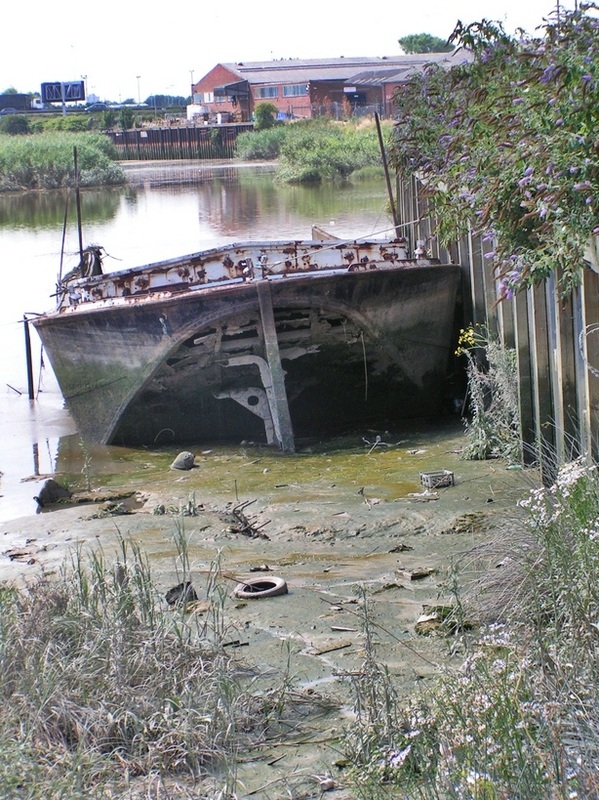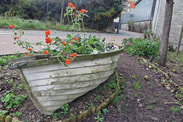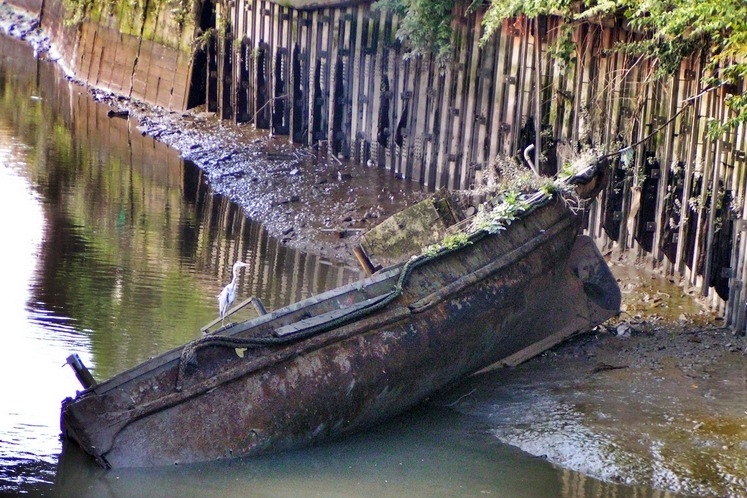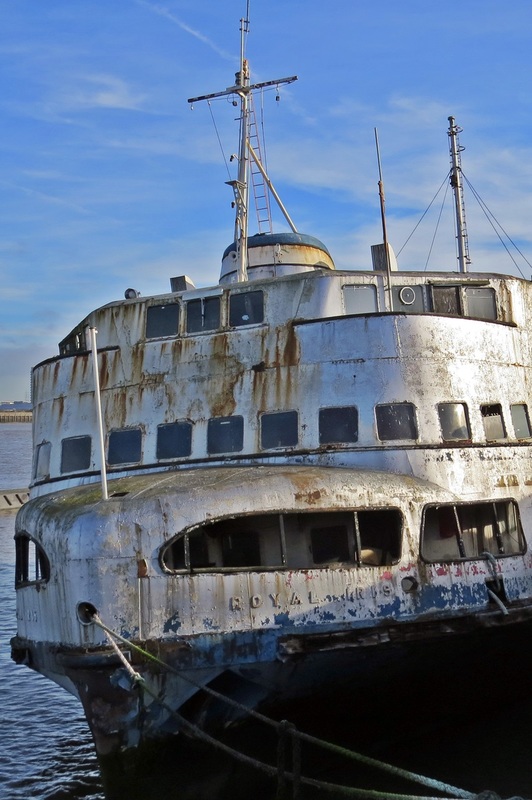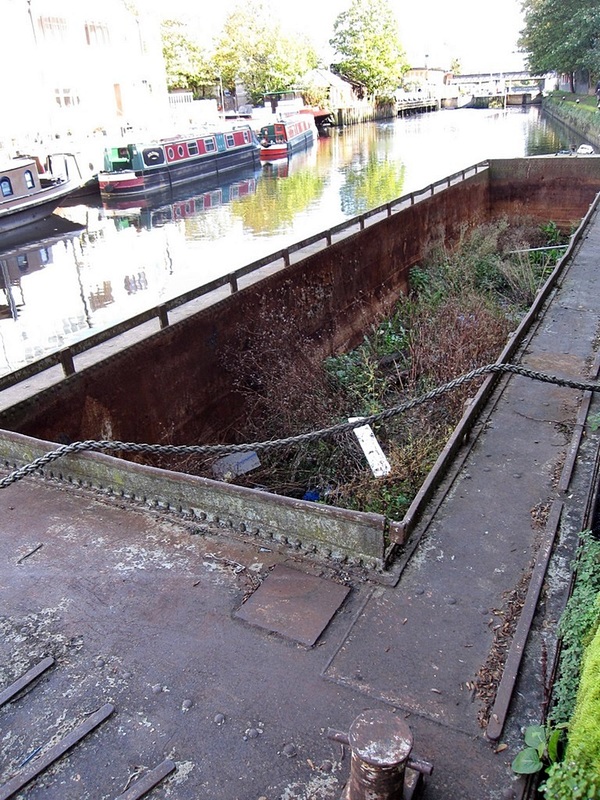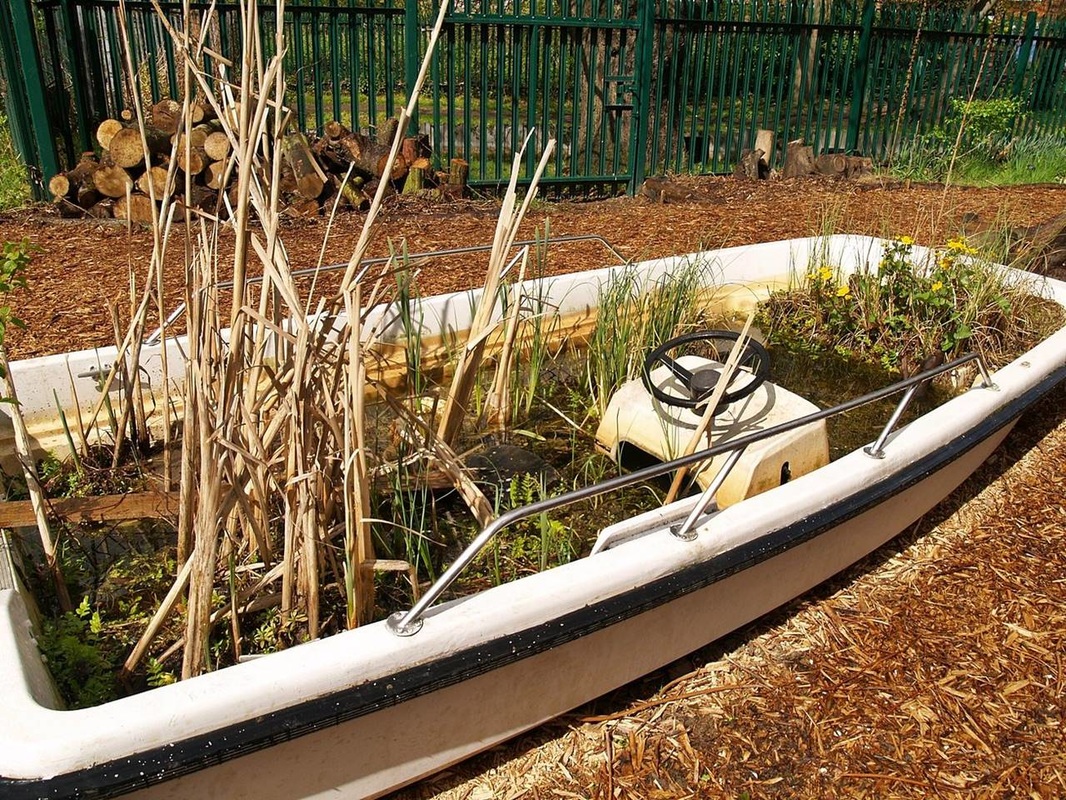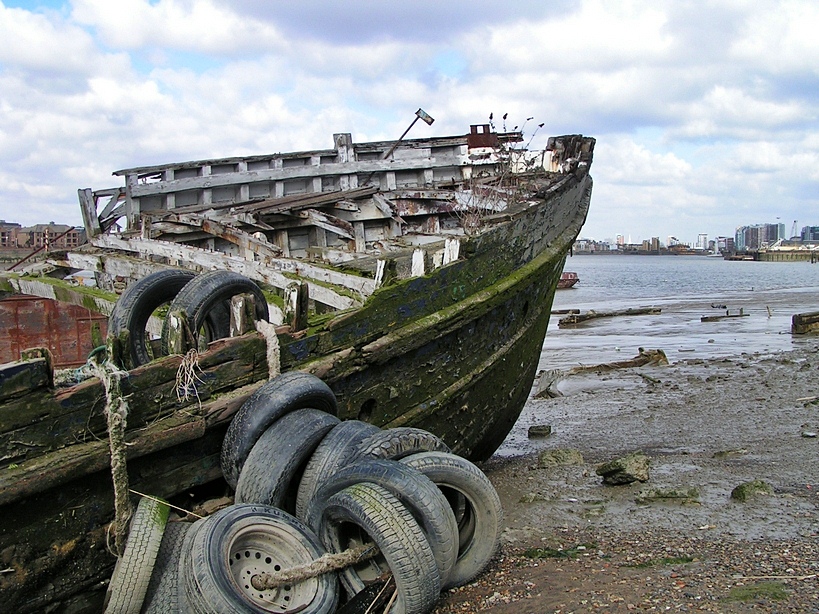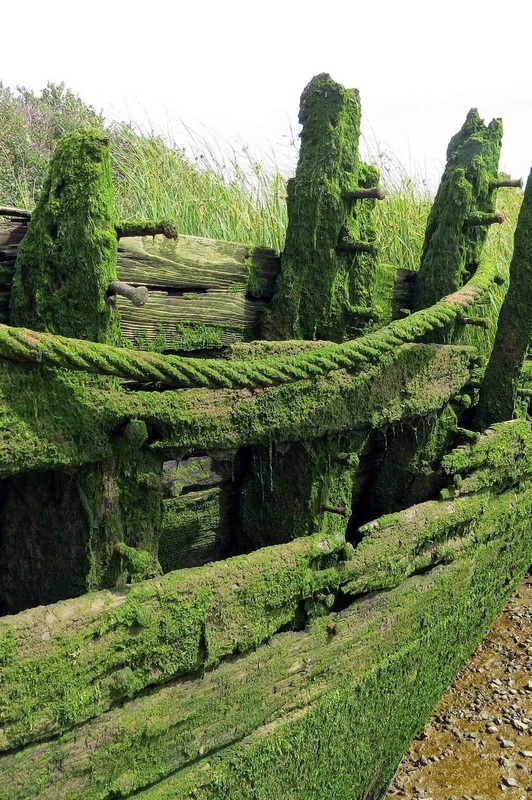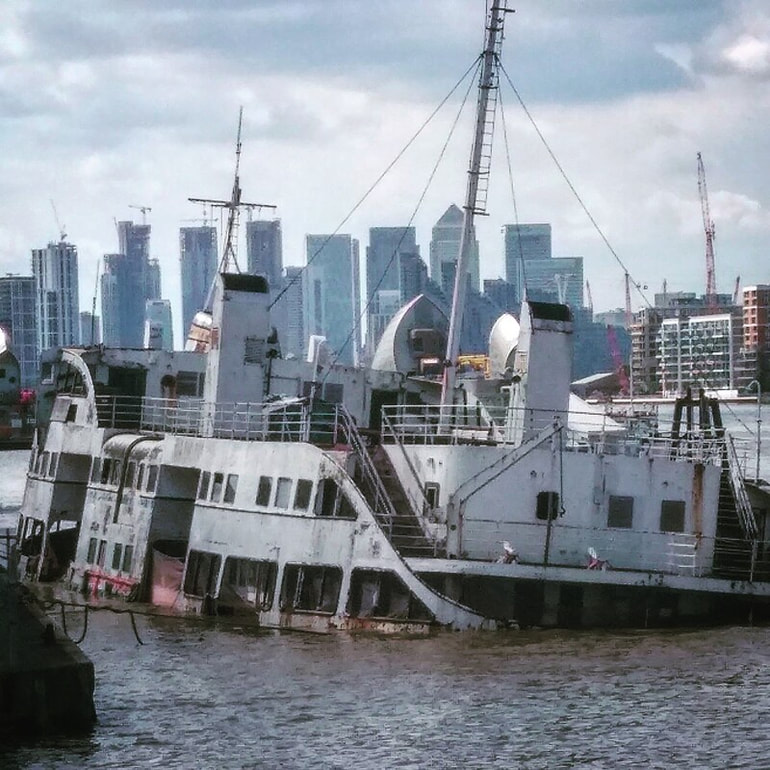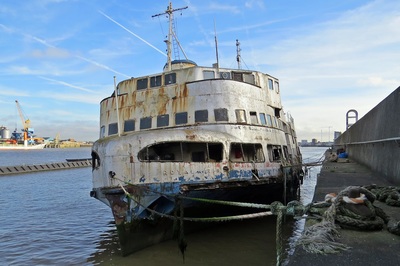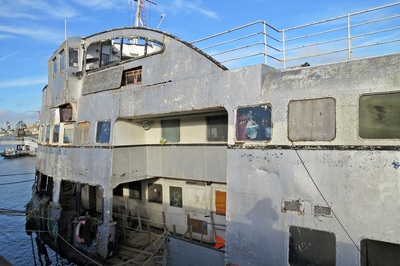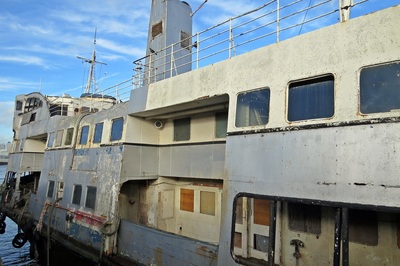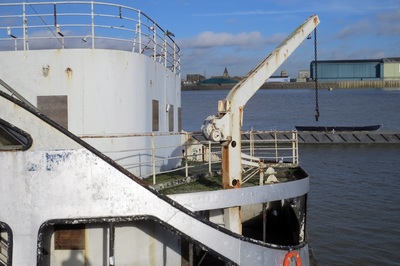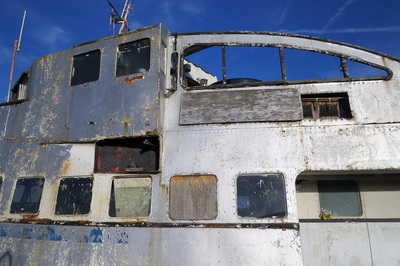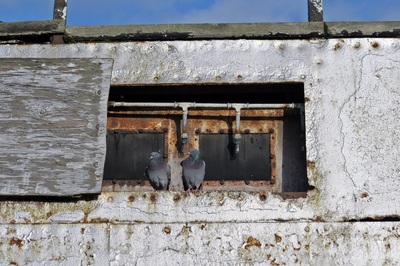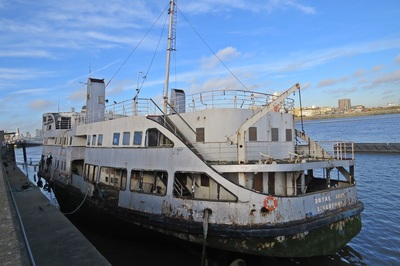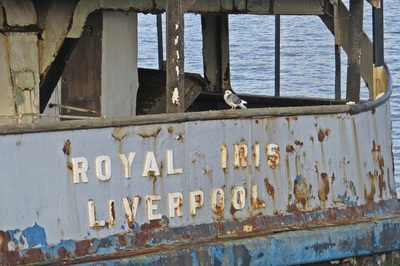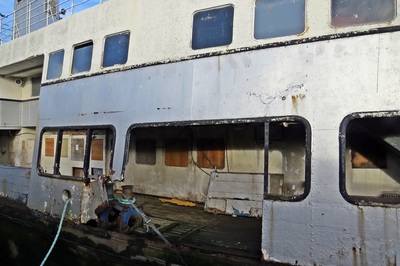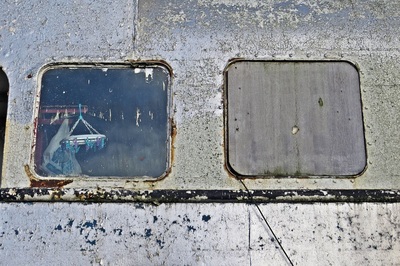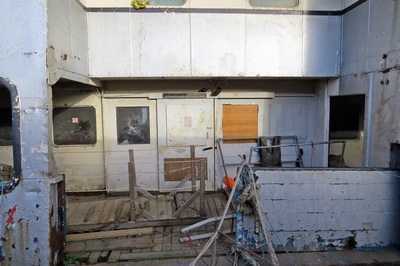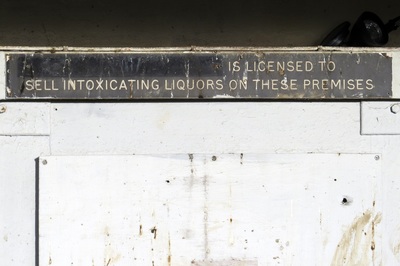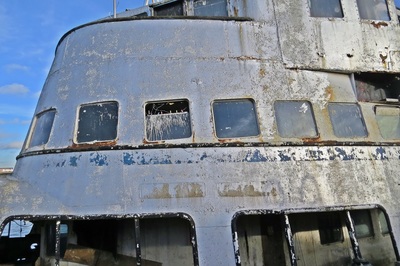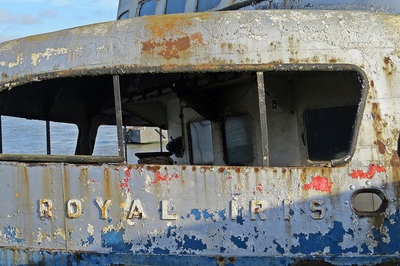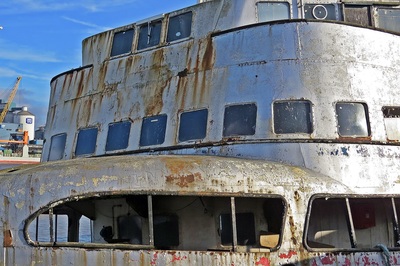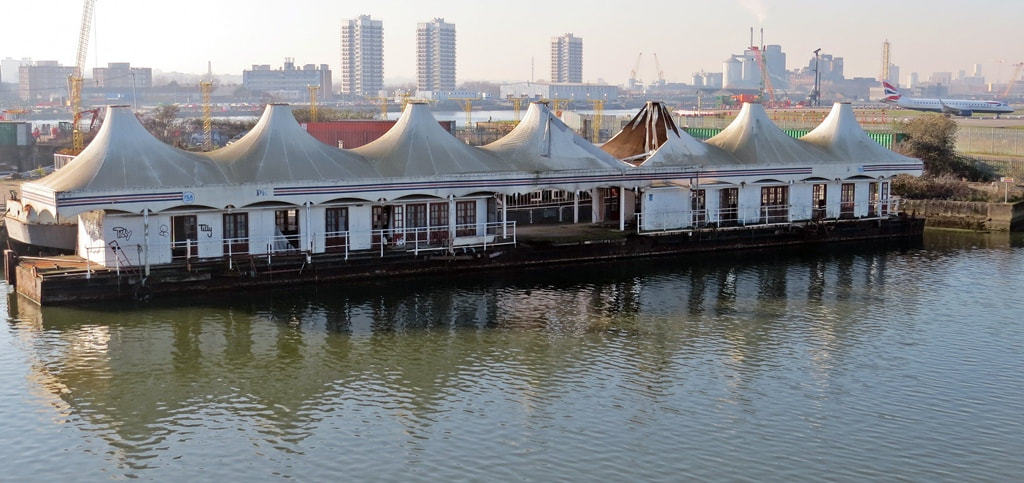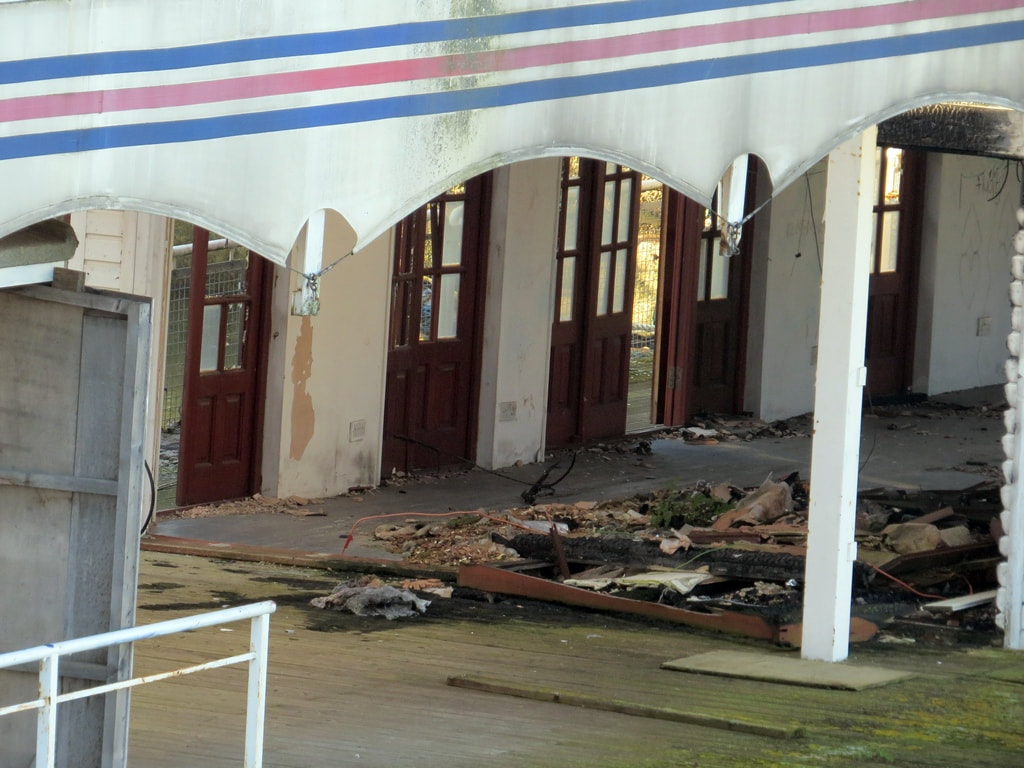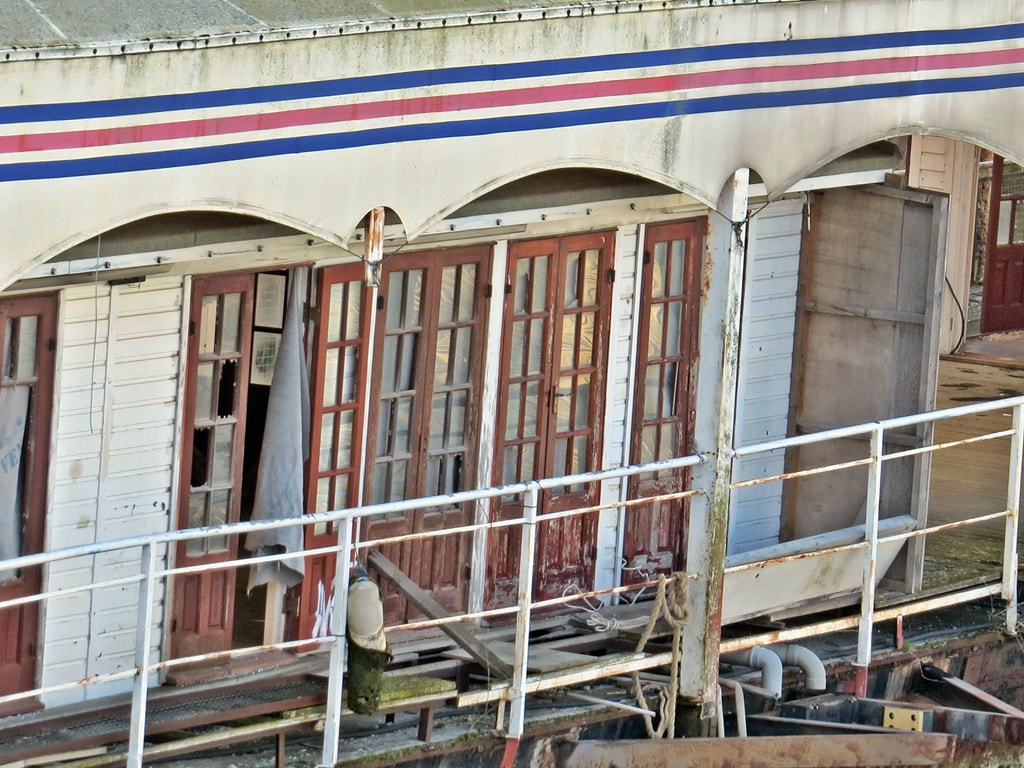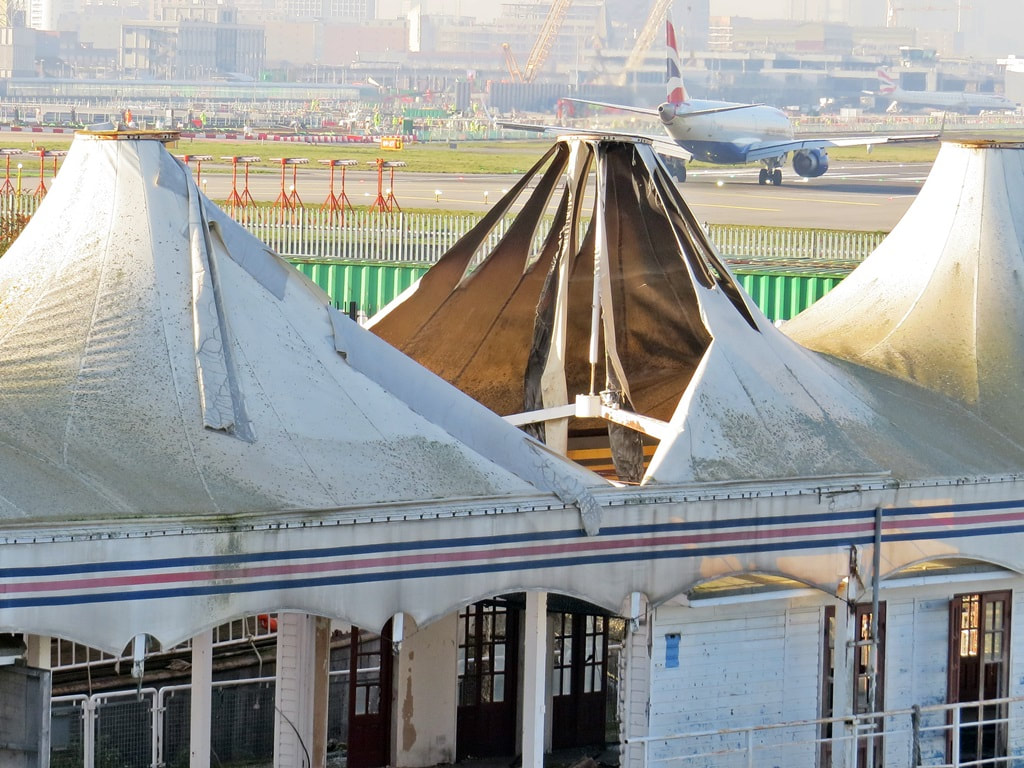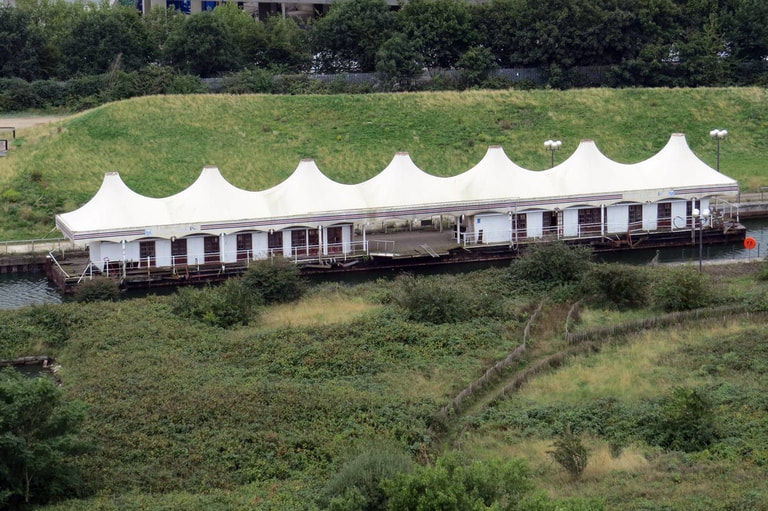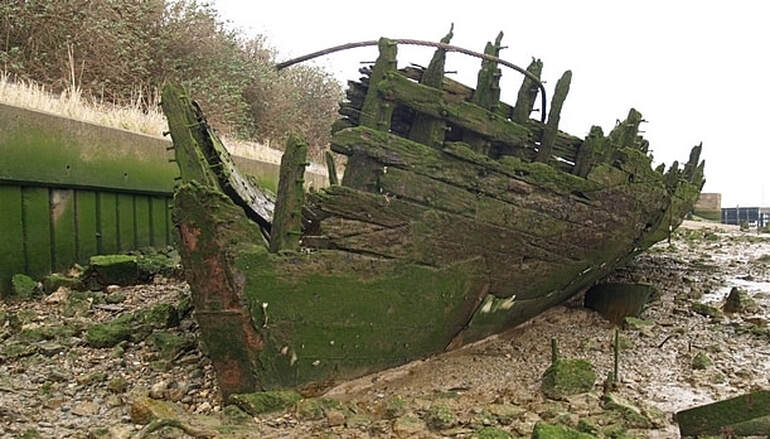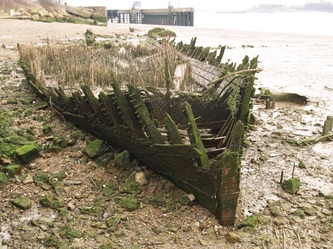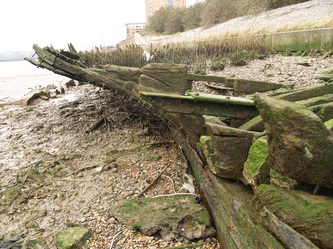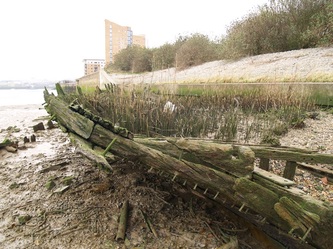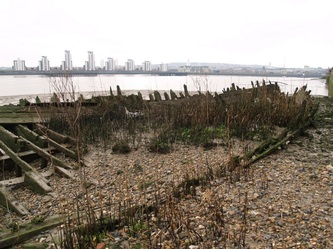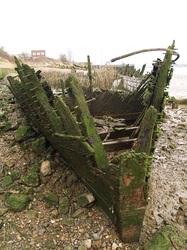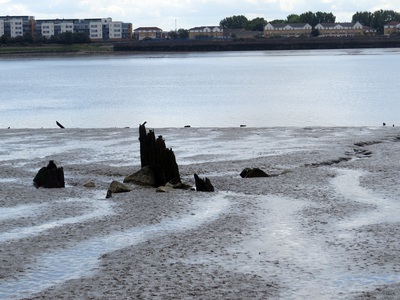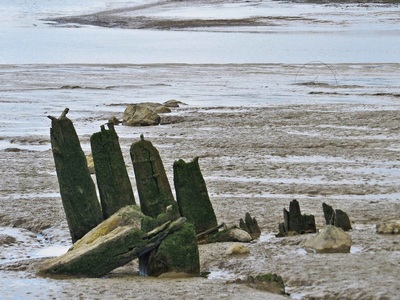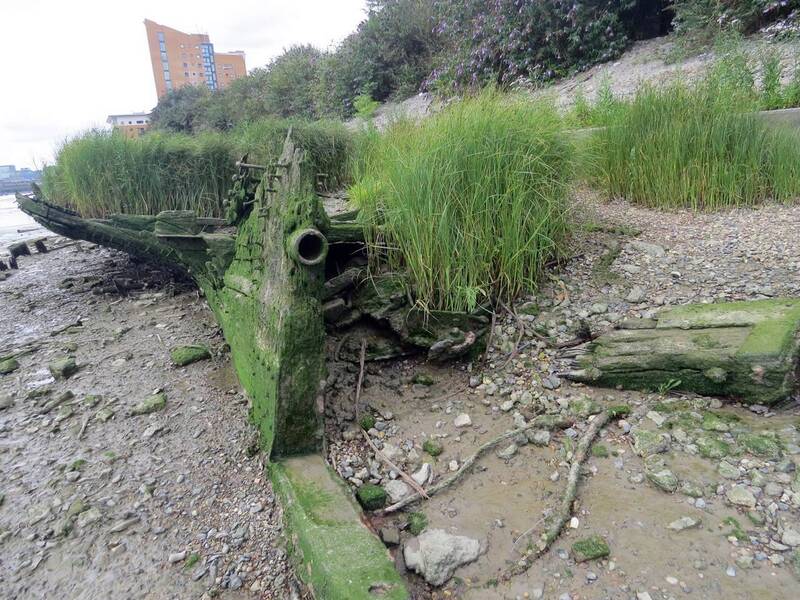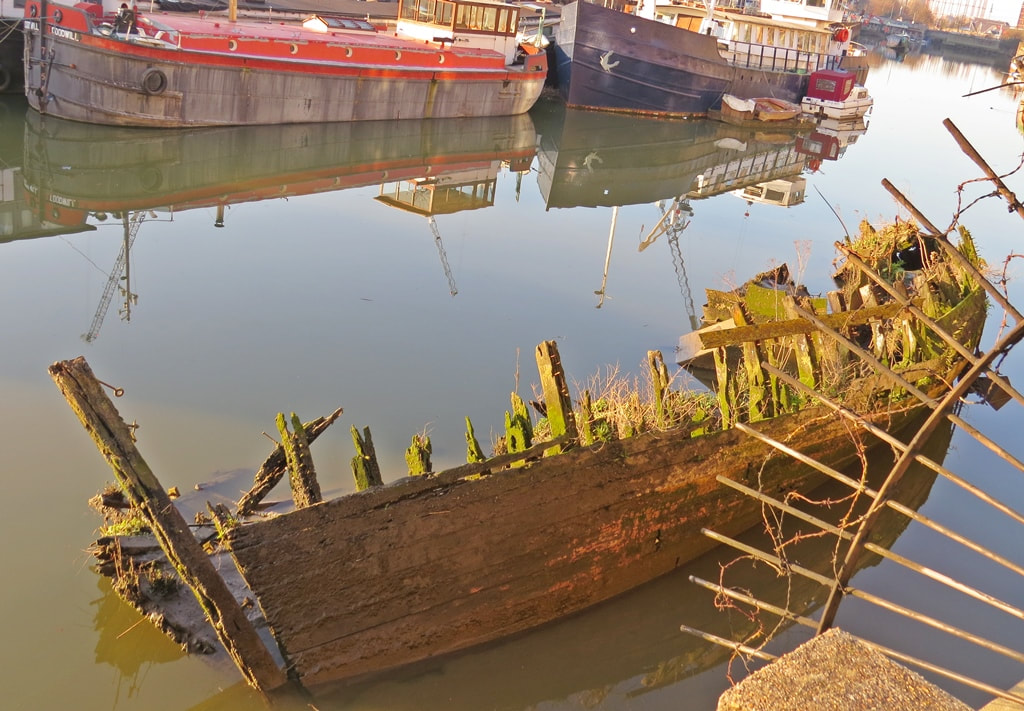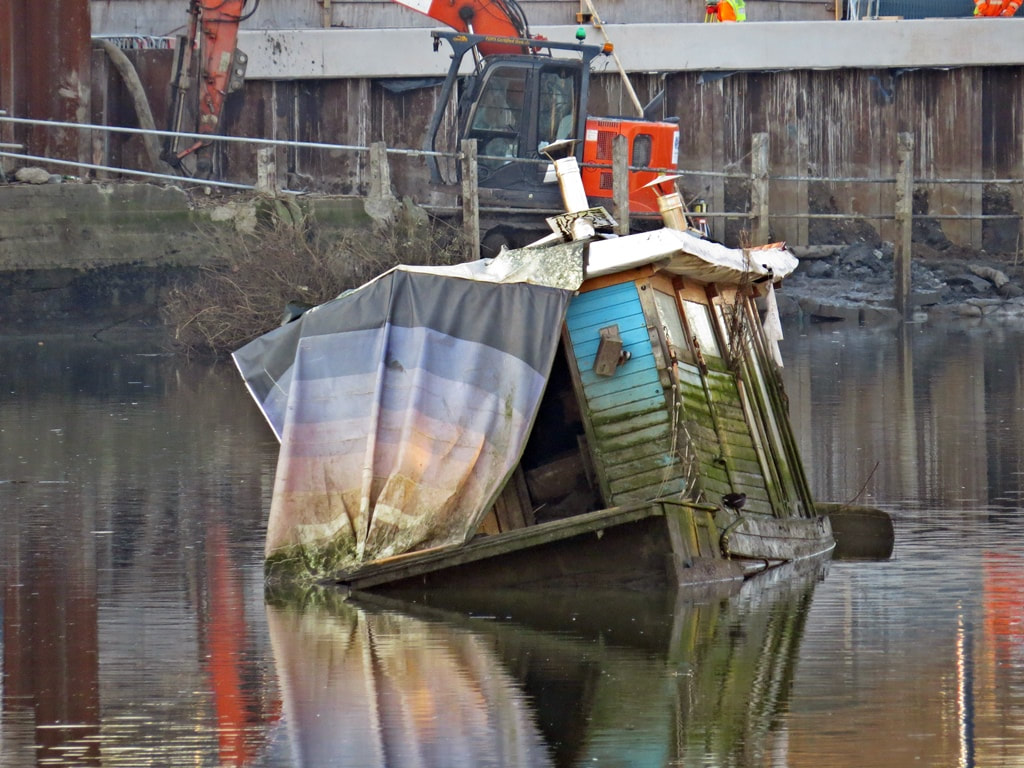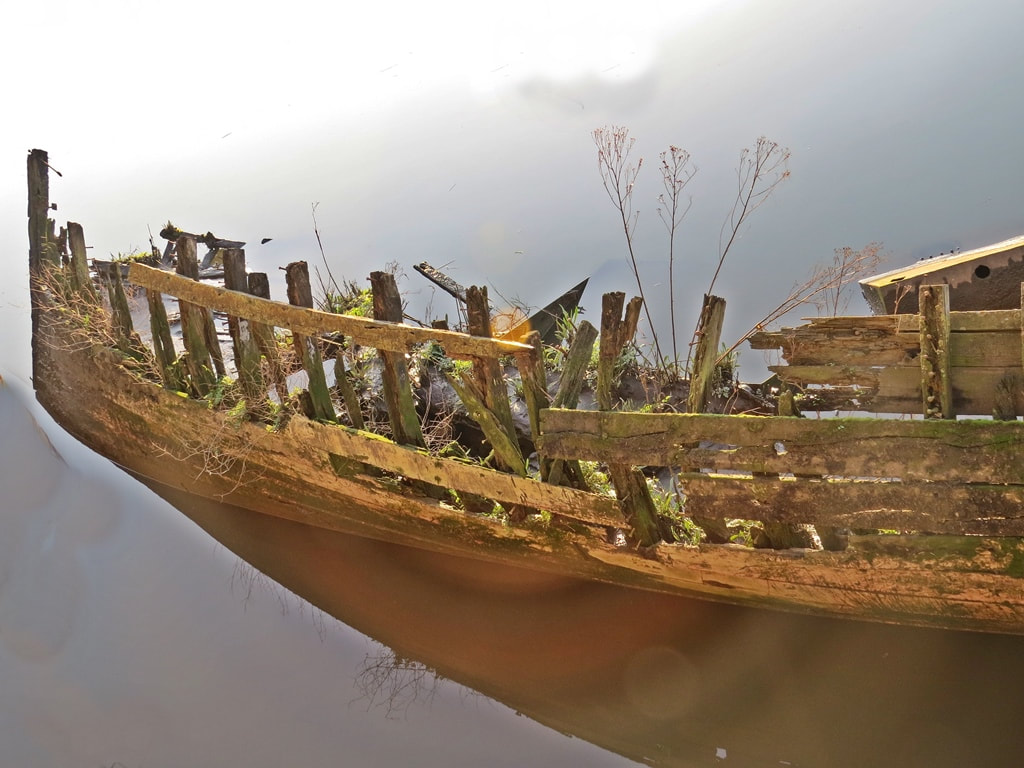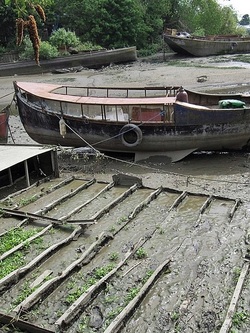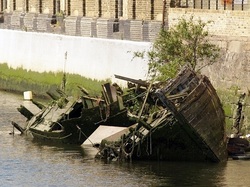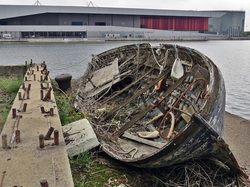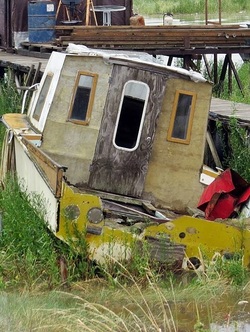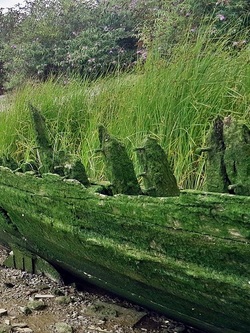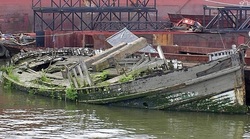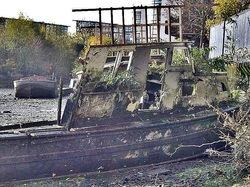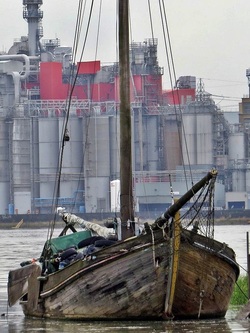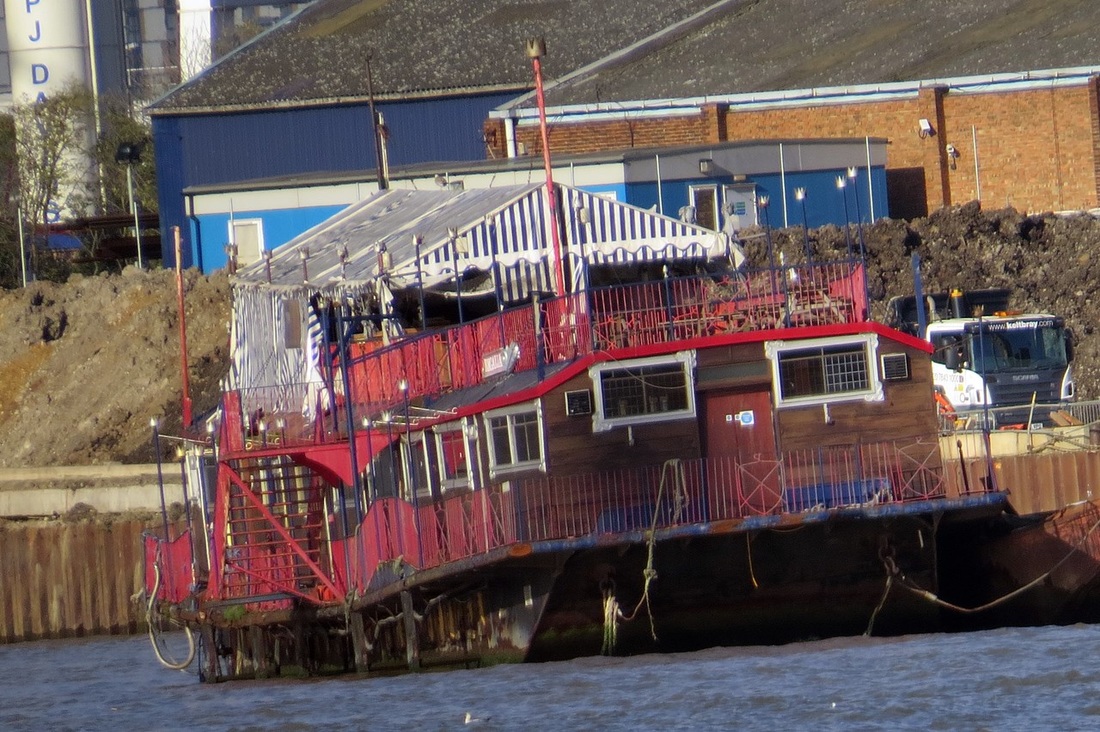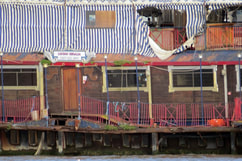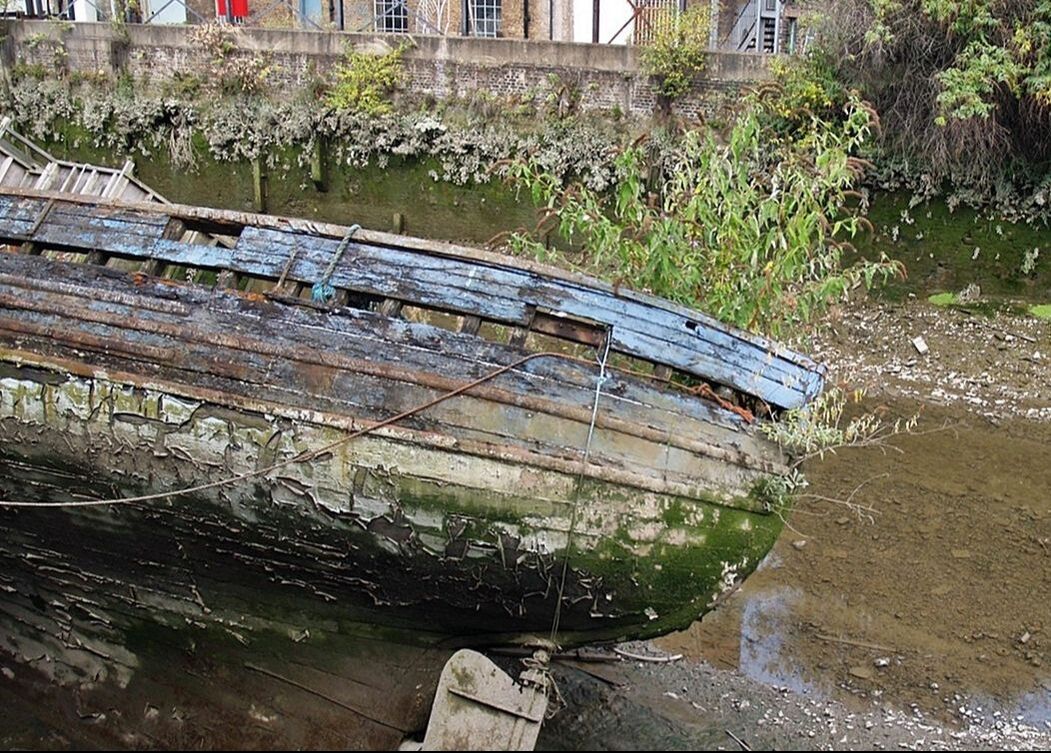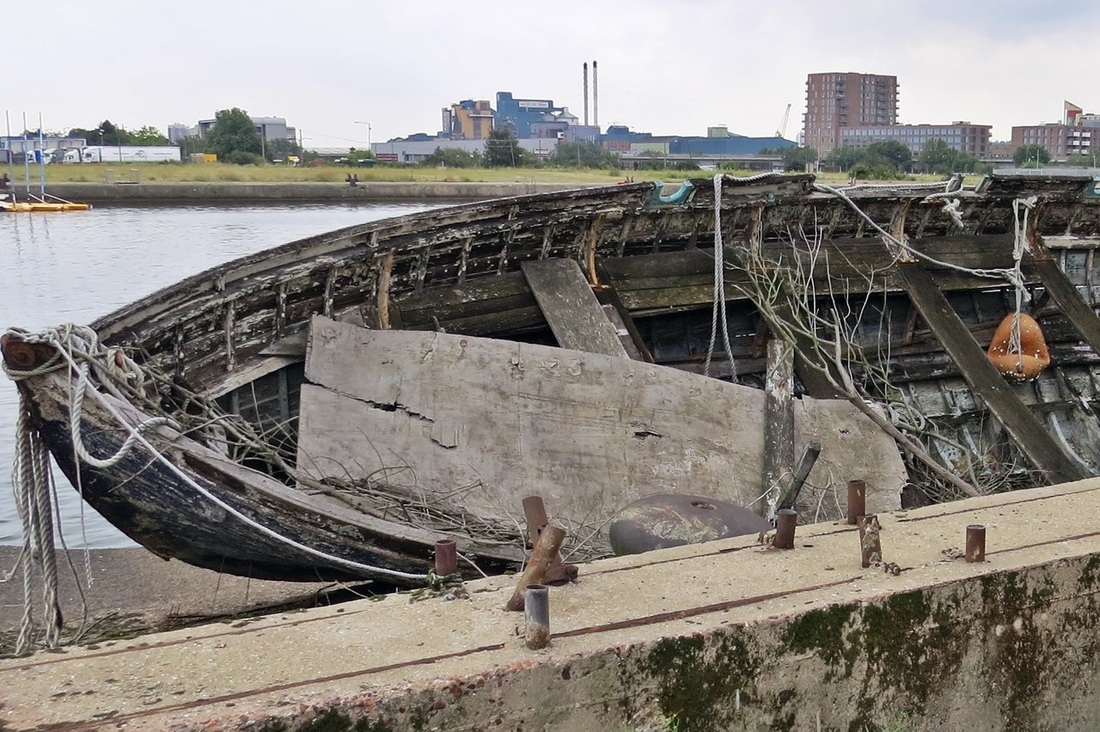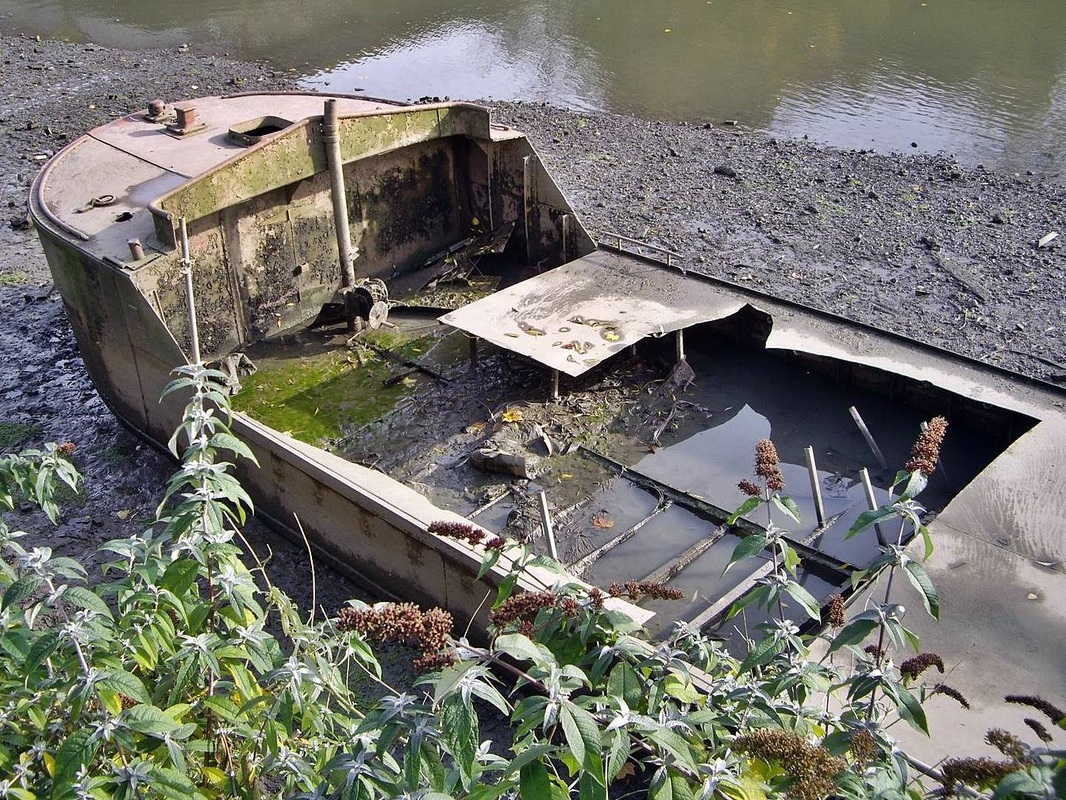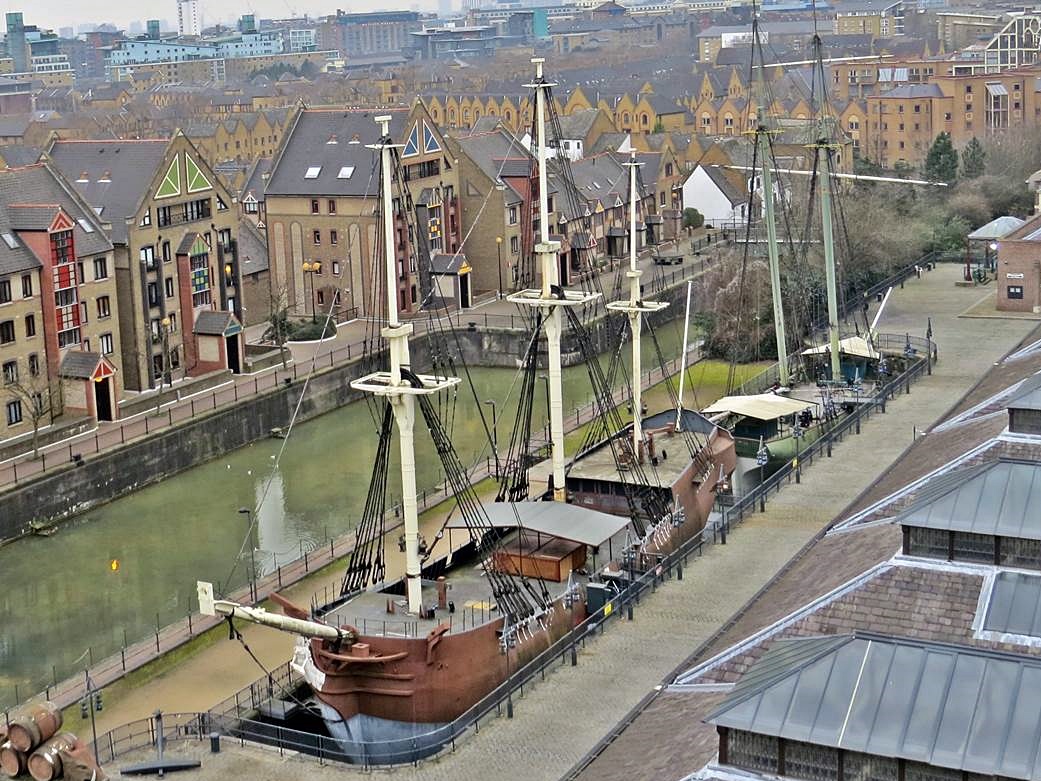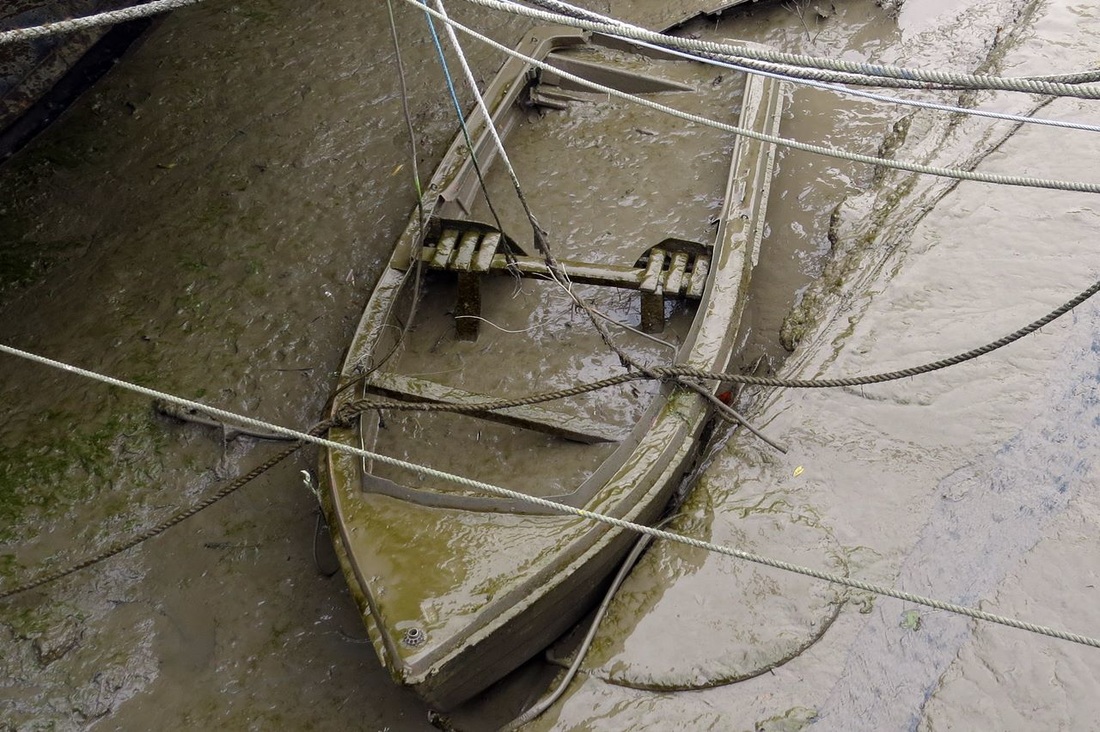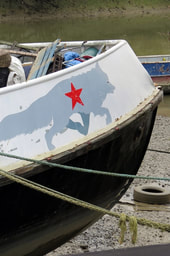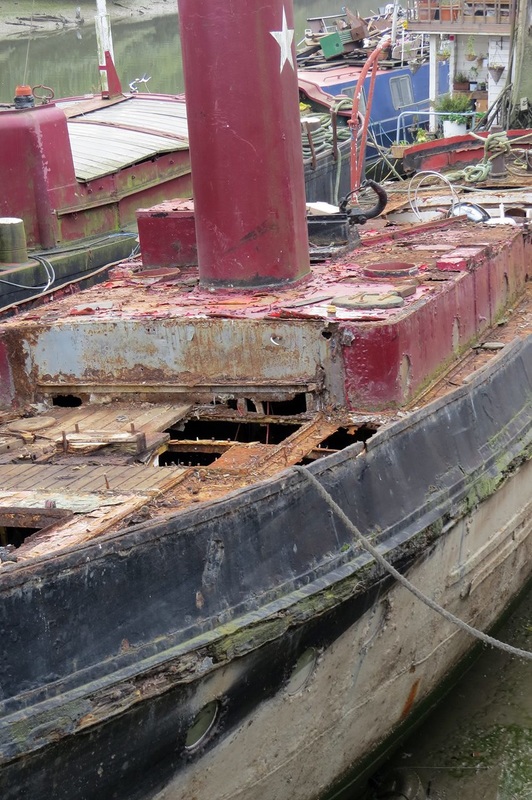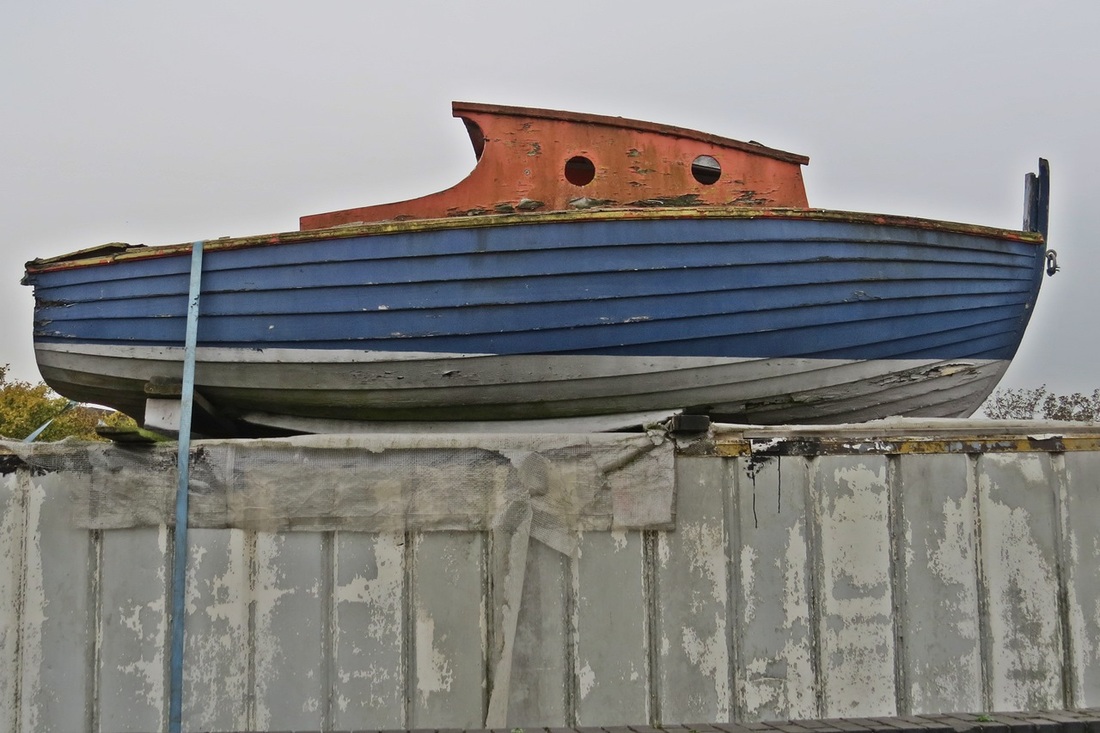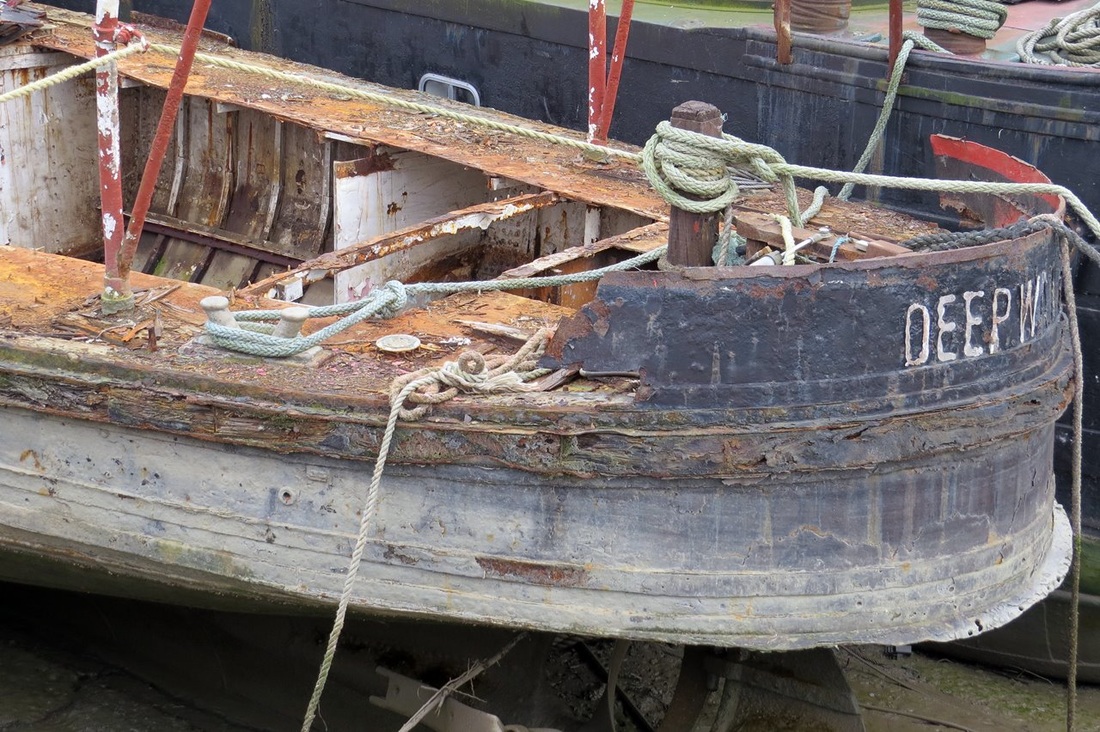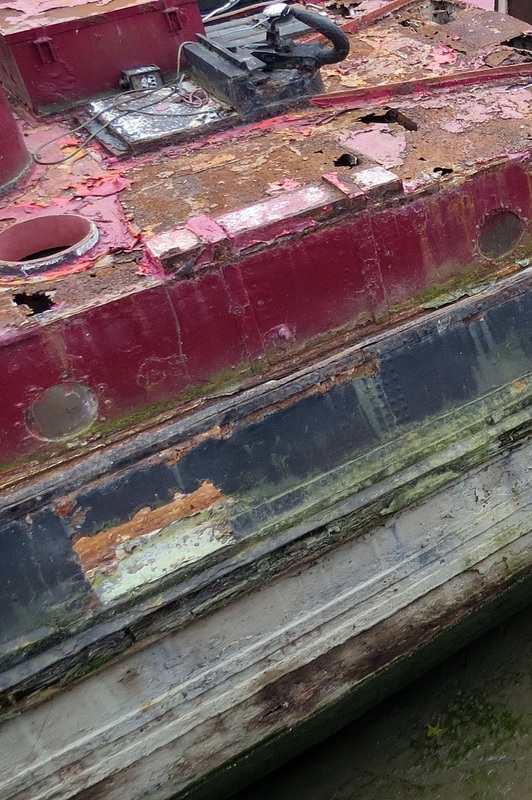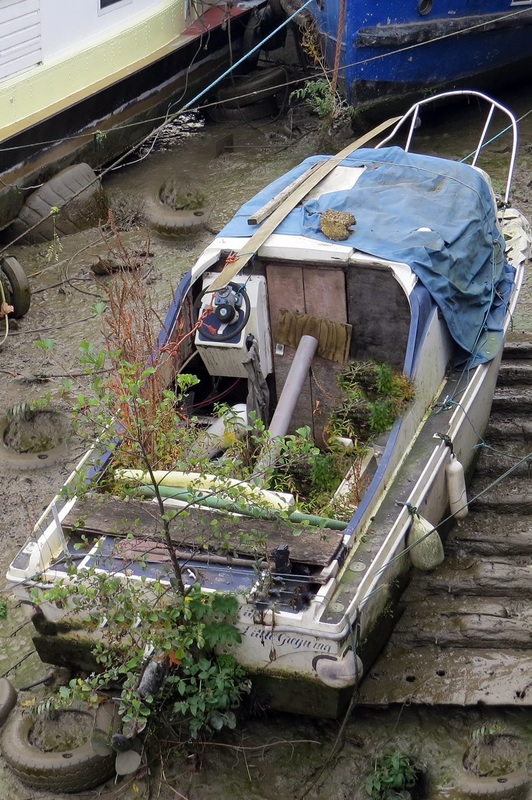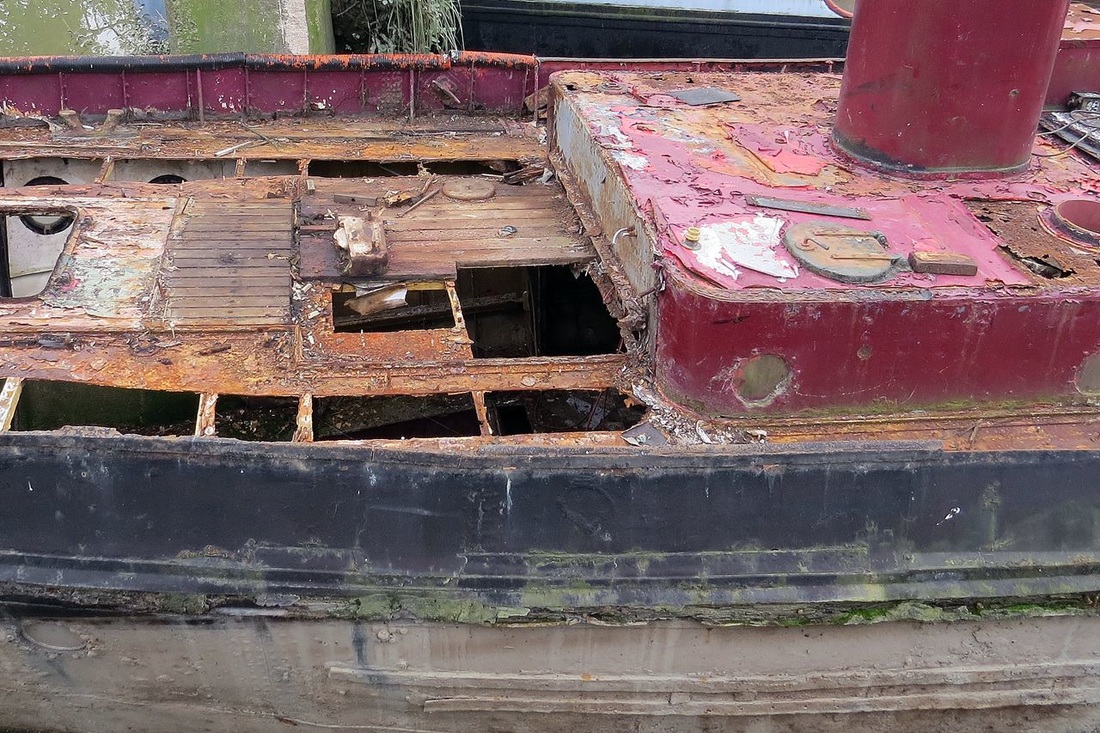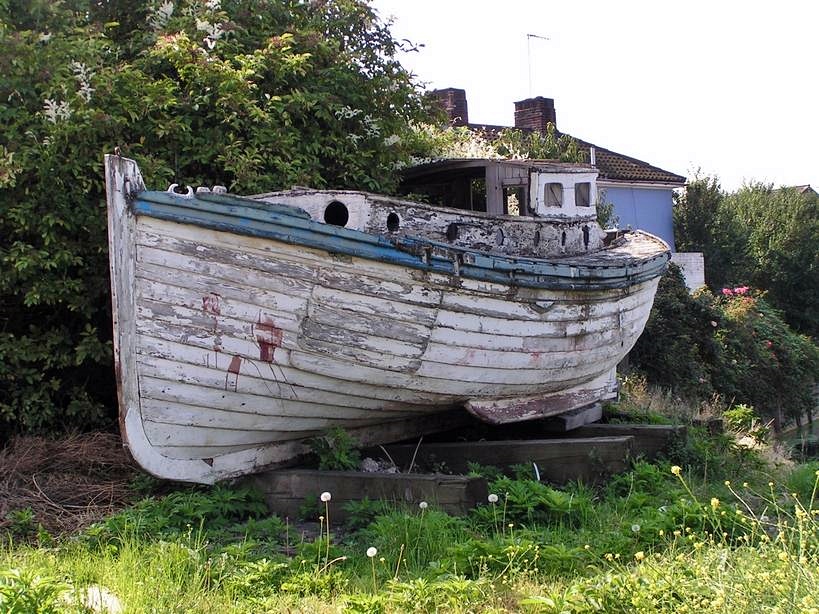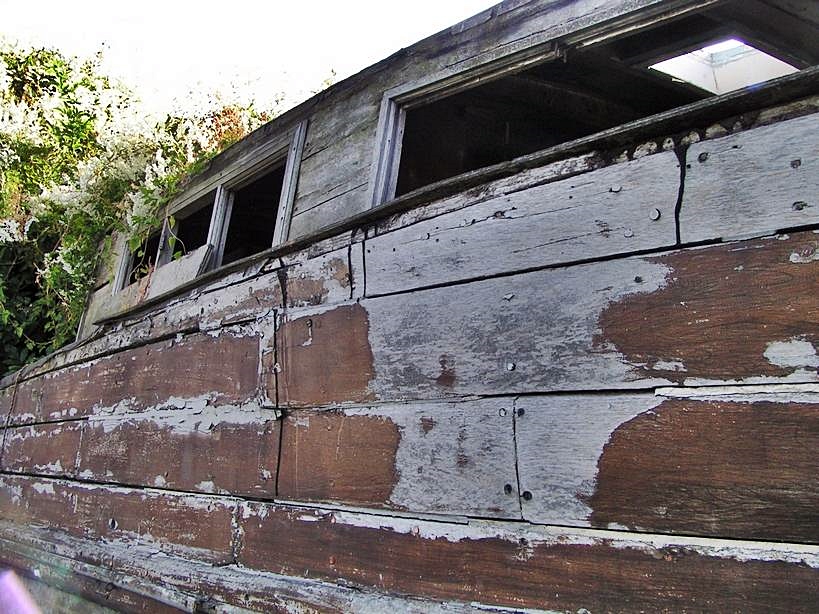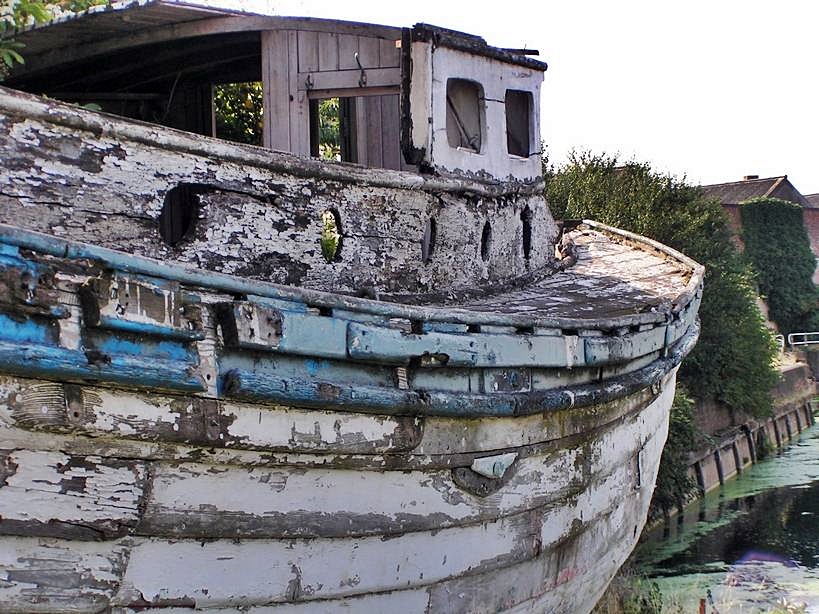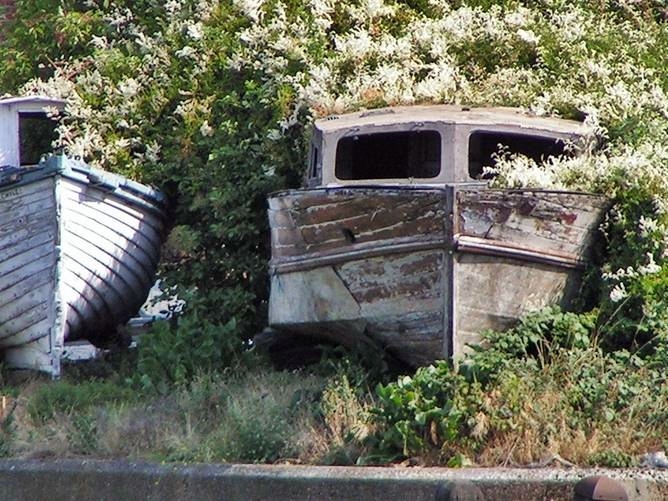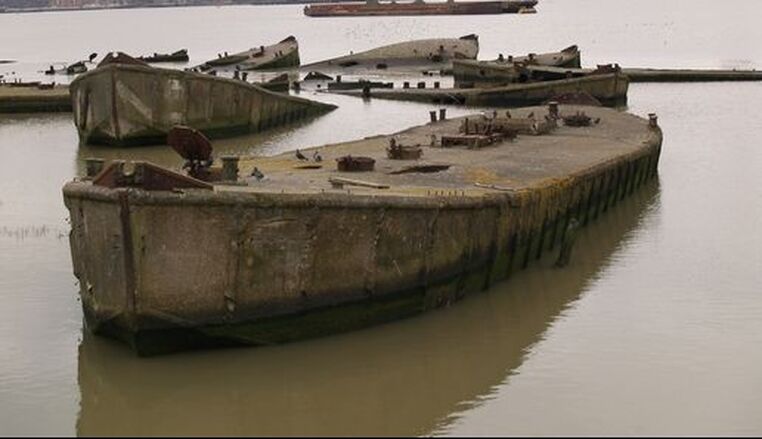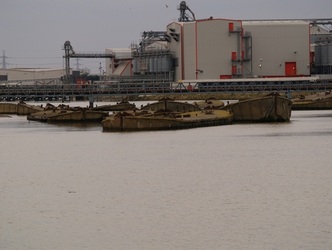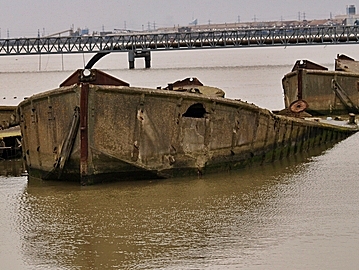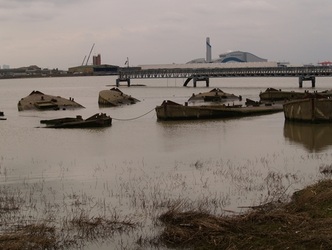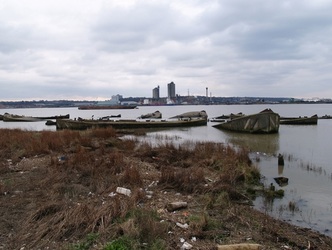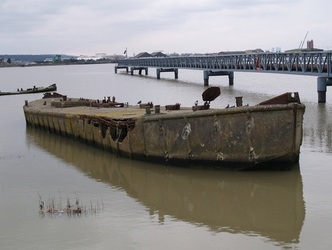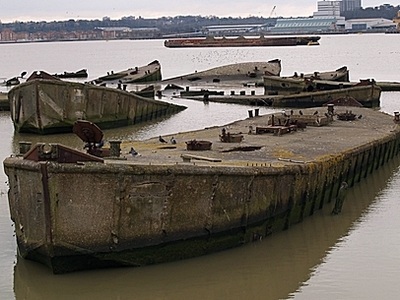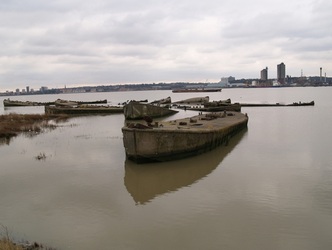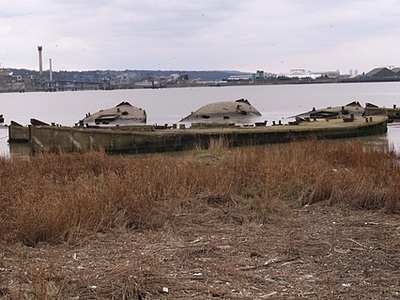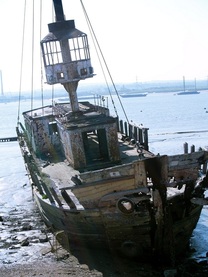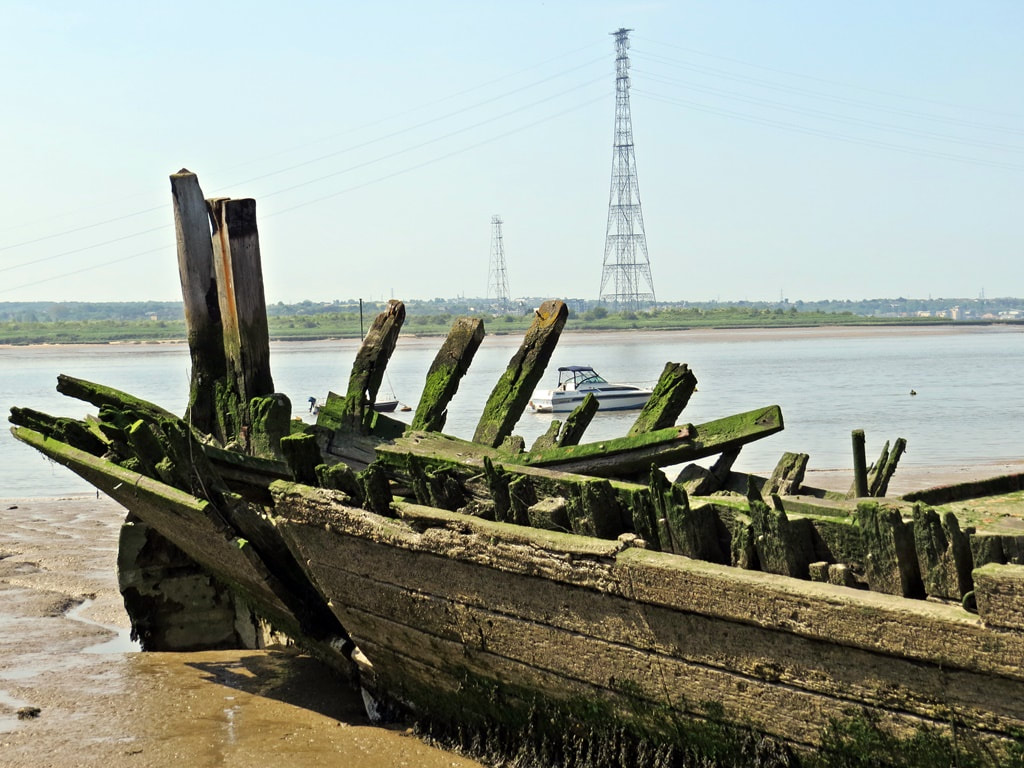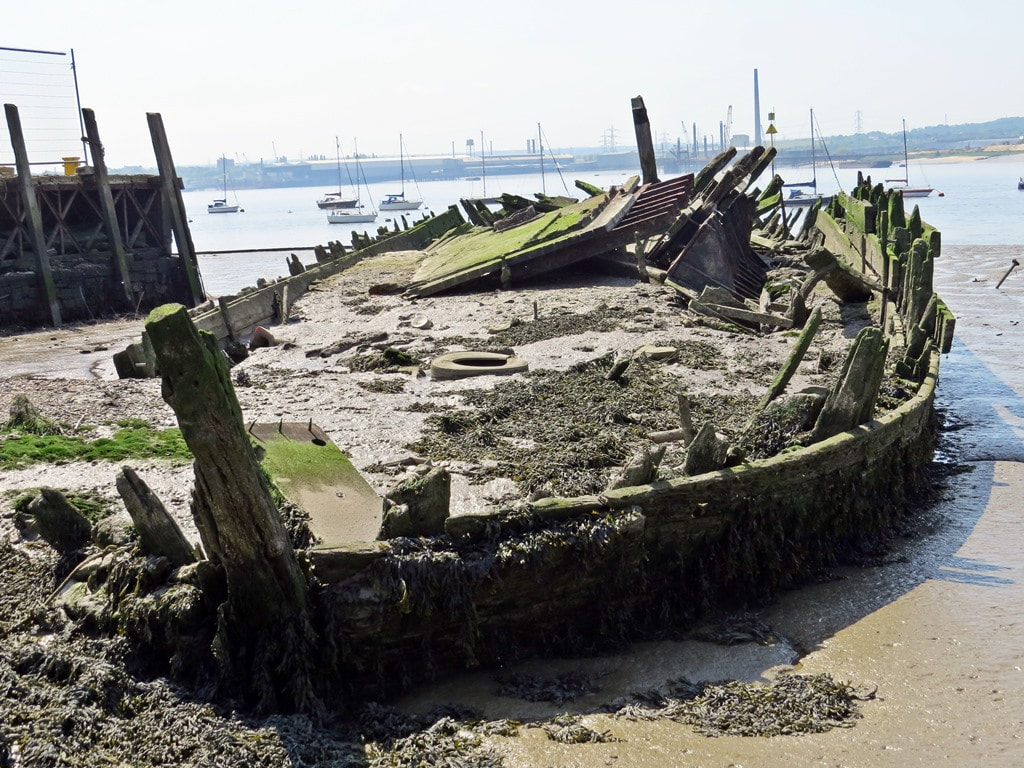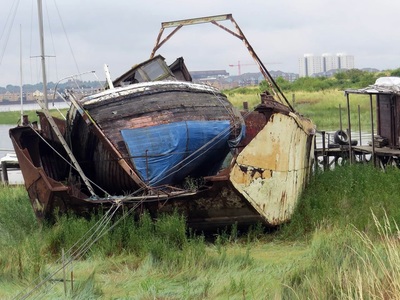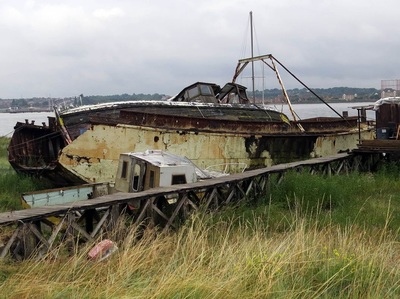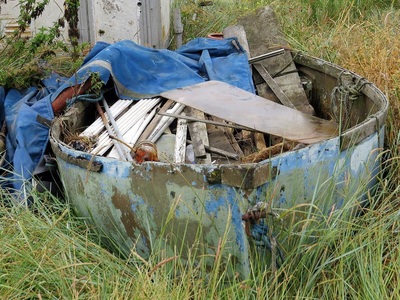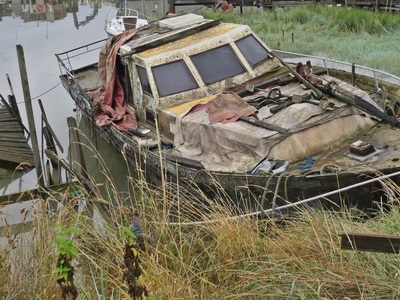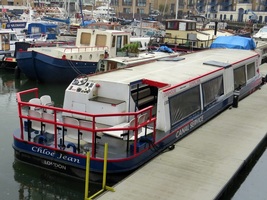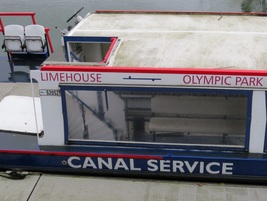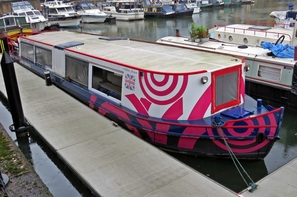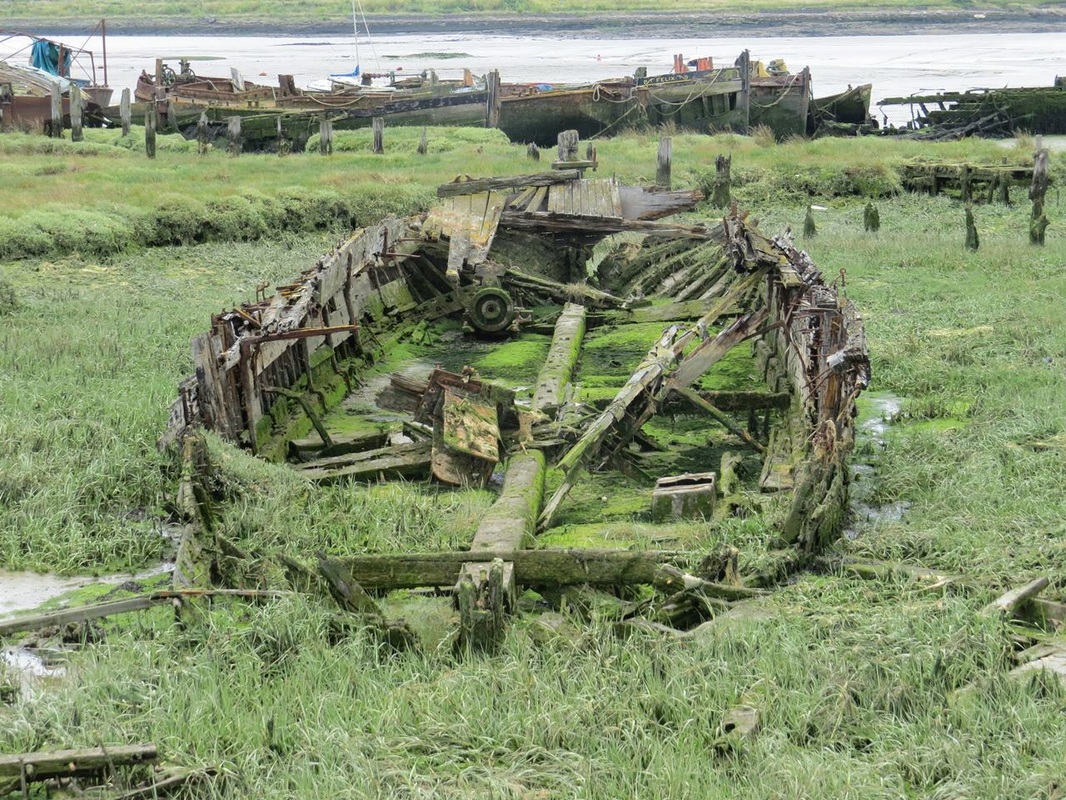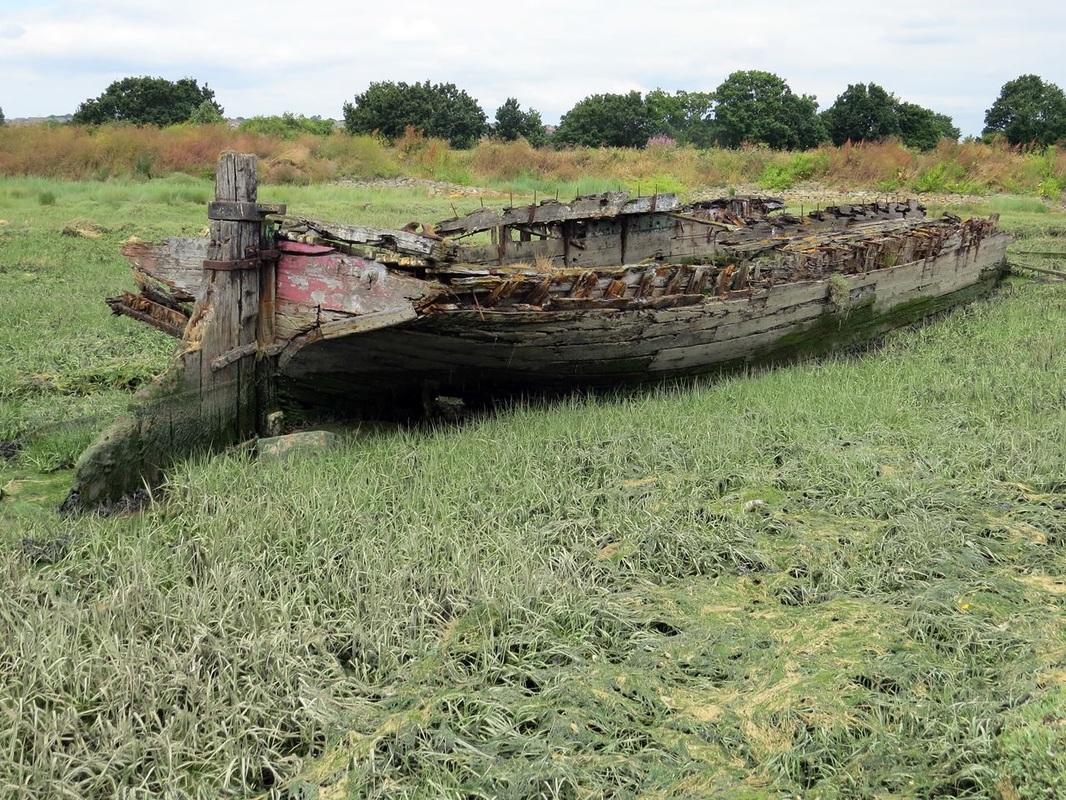A selection of abandoned, derelict and redundant boats spotted over the last few years in and around London.
Woolwich, SE18 - MV Royal Iris
The MV Royal Iris is a diesel-electric, former Mersey Ferry built in 1950 at a cost of £256,000.
The Royal Iris was licensed to carry 2,296 passengers on normal ferry duties, or 1,000 for cruising. Onboard amenities included a dancefloor and stage, tea room, buffet, cocktail bar, even a fish and chip saloon. The latter giving the Royal Iris the nickname "the fish and chip boat".
In 1951 the battleship HMS Duke of York was under tow on her way to being broken up at Gareloch when she collided with the Royal Iris. Some passengers enjoying a cruise were hospitalised as a result of the accident.
During the 1960s numerous acts associated with the Merseybeat scene performed on the ferry, Duke Duval played on the first Cavern Cruise, followed by The Beatles and Gerry & The Pacemakers.
After a refit at Harland and Wolff in Bootle in 1971 she was mainly used as a cruise vessel. A new steak bar and dining area replaced the original fish and ship saloon.
In 1977, the Royal Iris carried The Queen & The Duke of Edinburgh on their Silver Jubilee Mersey Review.The ship was used by Granada Television during the summer of 1979 as the setting for the ITV Saturday morning children's television series The Mersey Pirate.
The Royal Iris ran a farewell evening cruise in 1991, prior to being taken out of service & sold to a consortium for conversion into a floating nightclub, restaurant and conference centre, based in Liverpool under the name of 'Mr Smith's Nightclub'.After abortive plans to move her to Cardiff she was moved to her current site on the Thames in Woolwich awaiting a possible refit as a floating Thames nightclub.Since then she has severely deteriorated & is flooding at high tide and resting on her hull at low water which is putting more strain on her structure. Campaigns have been made to take her back home the cost of taking the vessel back to Merseyside is now estimated to be in 6 figures.
The Royal Iris was licensed to carry 2,296 passengers on normal ferry duties, or 1,000 for cruising. Onboard amenities included a dancefloor and stage, tea room, buffet, cocktail bar, even a fish and chip saloon. The latter giving the Royal Iris the nickname "the fish and chip boat".
In 1951 the battleship HMS Duke of York was under tow on her way to being broken up at Gareloch when she collided with the Royal Iris. Some passengers enjoying a cruise were hospitalised as a result of the accident.
During the 1960s numerous acts associated with the Merseybeat scene performed on the ferry, Duke Duval played on the first Cavern Cruise, followed by The Beatles and Gerry & The Pacemakers.
After a refit at Harland and Wolff in Bootle in 1971 she was mainly used as a cruise vessel. A new steak bar and dining area replaced the original fish and ship saloon.
In 1977, the Royal Iris carried The Queen & The Duke of Edinburgh on their Silver Jubilee Mersey Review.The ship was used by Granada Television during the summer of 1979 as the setting for the ITV Saturday morning children's television series The Mersey Pirate.
The Royal Iris ran a farewell evening cruise in 1991, prior to being taken out of service & sold to a consortium for conversion into a floating nightclub, restaurant and conference centre, based in Liverpool under the name of 'Mr Smith's Nightclub'.After abortive plans to move her to Cardiff she was moved to her current site on the Thames in Woolwich awaiting a possible refit as a floating Thames nightclub.Since then she has severely deteriorated & is flooding at high tide and resting on her hull at low water which is putting more strain on her structure. Campaigns have been made to take her back home the cost of taking the vessel back to Merseyside is now estimated to be in 6 figures.
Silvertown & North Woolwich E16 - Charing Cross Pier
This floating pier was made in 1932 by Harland and Wolff, the shipbuilders responsible for the Titanic, to be the access onto the river for Charing Cross railway station. It sat near to Cleopatra's Needle until it made way for a newer model named Embankment Pier during the millennium redevelopment of the Embankment.
The floating pier was bought by a TV set designer (for such programmes as Eastenders and Holby City) who wished to turn it into her home & it then spent 6 months tied up in mid-river at Tower Bridge before being refurbished into living accomodation. Decking was constructed around the outside edge with timber floors installed inside. 100 French windows were added which let in maximum light and gave access to the decks at every point.Then in 2001 it was relocated to Greenland Pier in Rotherhithe where she lived apparently for a while. It is unclear why it then appeared in 2009 in one of the fingers of the old graving dock of the Royal Victoria Dock by the derelict Millenium Mills site. It became The Floating Cocktail Lounge when this site became part of the ill fated London Pleasure Gardens in 2012. The cocktail lounge billed as ‘a pinnacle of luxury and decadence’ with the organisers given a three-year licence to run the site it all ended less that 5 weeks after opening and the London Pleasure Gardens losing Newham Council several million pounds.
This vacant ex floating pier sat on the same graving dock site in increasingly poor condition after vandalism. In late 2019 it was moved to the Albert Dock in North Woolwich and as you can see from the photographs above it's condition has deteriorated further.
Ben M writes: "The lady did indeed live on the pier until I believe she was asked to move on after making complaints about the noise of passenger vessels stopping at Greenland Pier".
As a footnote, this pier features in London's music history as The Sex Pistols set off from Charing Cross Pier in 1977 2 days before the Queen was due to sail down the river as part of the Silver Jubilee festivities. The band's hired boat was even called Queen Elizabeth.The band played Anarchy In The UK as the packed boat passed the Houses of Parliament. Police boats circled them and scuffles broke out as the Pistols and their entourage tried to re-dock at Charing Cross Pier.
The floating pier was bought by a TV set designer (for such programmes as Eastenders and Holby City) who wished to turn it into her home & it then spent 6 months tied up in mid-river at Tower Bridge before being refurbished into living accomodation. Decking was constructed around the outside edge with timber floors installed inside. 100 French windows were added which let in maximum light and gave access to the decks at every point.Then in 2001 it was relocated to Greenland Pier in Rotherhithe where she lived apparently for a while. It is unclear why it then appeared in 2009 in one of the fingers of the old graving dock of the Royal Victoria Dock by the derelict Millenium Mills site. It became The Floating Cocktail Lounge when this site became part of the ill fated London Pleasure Gardens in 2012. The cocktail lounge billed as ‘a pinnacle of luxury and decadence’ with the organisers given a three-year licence to run the site it all ended less that 5 weeks after opening and the London Pleasure Gardens losing Newham Council several million pounds.
This vacant ex floating pier sat on the same graving dock site in increasingly poor condition after vandalism. In late 2019 it was moved to the Albert Dock in North Woolwich and as you can see from the photographs above it's condition has deteriorated further.
Ben M writes: "The lady did indeed live on the pier until I believe she was asked to move on after making complaints about the noise of passenger vessels stopping at Greenland Pier".
As a footnote, this pier features in London's music history as The Sex Pistols set off from Charing Cross Pier in 1977 2 days before the Queen was due to sail down the river as part of the Silver Jubilee festivities. The band's hired boat was even called Queen Elizabeth.The band played Anarchy In The UK as the packed boat passed the Houses of Parliament. Police boats circled them and scuffles broke out as the Pistols and their entourage tried to re-dock at Charing Cross Pier.
North Woolwich, E16 - Gallions Reach Wreck
I first stumbled upon the wreck in these pics along the foreshore at low tide - it appears to be a Thames sailing barge. We visit this hidden stretch of the foreshore on the north of the river section of my Derelict London tour of Woolwich.
A Thames sailing barge was a type of commercial sailing boat with a flat-bottomed hull which made these craft extremely versatile and economical. They could float in as little as 3 feet of water - this allowed them to visit the narrow tributaries and creeks of the Thames to load farm cargoes, or to dry out on the sand banks and mudflats to load materials for building and brickmaking. They had a main mast that could be lowered to clear bridges.
In the 1960s there were a few of these redundant barges tied up and left to rot between the entrances of the King George V and Royal Albert Dock and this is the last one left here apart from a few clues sticking out of the mud on a very low tide.
A Thames sailing barge was a type of commercial sailing boat with a flat-bottomed hull which made these craft extremely versatile and economical. They could float in as little as 3 feet of water - this allowed them to visit the narrow tributaries and creeks of the Thames to load farm cargoes, or to dry out on the sand banks and mudflats to load materials for building and brickmaking. They had a main mast that could be lowered to clear bridges.
In the 1960s there were a few of these redundant barges tied up and left to rot between the entrances of the King George V and Royal Albert Dock and this is the last one left here apart from a few clues sticking out of the mud on a very low tide.
Please be aware of the dangers of venturing onto the Thames foreshore when the tide is out. If you do, you may become stranded when the tide comes in or get stuck in dangerous mud. This happened to some boys who were trapped in mud near the Gallions Reach wreck (above).One of them was waist deep in mud and only freed after police lassoed him and dragged him 25 metres towards some steps.
Barking Creek, IG11 - Barking
Barking Creek joins the River Roding to the River Thames. It is fully tidal up to the Barking Barrage (a weir), which impounds a minimum water level through Barking.
In the 1850s, the creek was home to England's largest fishing fleet and a Victorian icehouse – where the fish were landed and stored prior to being transferred to London's fish markets. Barking Creek now contains a small number of house boats plus the odd wreck.
the leader of Barking and Dagenham council recently told the Evening Standard : “Barcelona and other cities around the world have developed under-used wharves and harbours into vibrant waterfront attractions. I see no reason why Barking Riverside cannot draw on the best of these developments.”
In the 1850s, the creek was home to England's largest fishing fleet and a Victorian icehouse – where the fish were landed and stored prior to being transferred to London's fish markets. Barking Creek now contains a small number of house boats plus the odd wreck.
the leader of Barking and Dagenham council recently told the Evening Standard : “Barcelona and other cities around the world have developed under-used wharves and harbours into vibrant waterfront attractions. I see no reason why Barking Riverside cannot draw on the best of these developments.”
West Silvertown,E16 - The London Regalia
The London Regalia, a floating pub was moored at Swan Pier, on the North bank of the Thames between Cannon Street Railway Bridge and London Bridge.
The permanently moored vessel offered The lower Orlop deck incorporating a stage and dance floor along with a bar and seating for 130. The galleried Mezzanine deck had a large bar with additional seating for 100 persons. The bar was very popular with City workers during Summer evenings. It also sold food from BBQs to private hire silver service functions such as wedding receptions.
The London Regalia was closed in approx 2011 and was towed downriver to West Silvertown where it currently remains disused and gradually decaying away.
Ben M writes: "Regalia is up for sale and has appeared on apolloduck website priced around £100,000. The interior is still complete and as was".
Deptford Creek - Deptford SE8
Today Deptford is overshadowed by nearby Greenwich, but it, too, has played an important part in London’s history. A fishing village in the Middle Ages, it witnessed the Battle of Deptford Bridge in 1497 on a site adjacent to Deptford Creek when Cornish rebels under their leader Lord Audley were soundly beaten by the king’s forces. A few years later Henry VIII created a royal dockyard here, and it was at Deptford that Elizabeth I knighted Francis Drake on board the Golden Hind on his return from circumnavigating the globe in 1580. The Golden Hind remained moored in the creek until it broke up. Later still Captain Cook’s ships Resolution and Discovery were equipped at Deptford before his last voyage to the Pacfic.
Deptford’s fall from grace has been dramatic, although regeneration of the area is now well under way. In the meantime the abandoned industrial landscape has produced a lively local wildlife habitat.
Deptford’s fall from grace has been dramatic, although regeneration of the area is now well under way. In the meantime the abandoned industrial landscape has produced a lively local wildlife habitat.
Some boats around Brentford:
Stratford, E15 - City Mill River
City Mill River, part of the Bow Back Rivers in East London formerly fed City Mill, used for the production of chemicals in the late nineteenth and early twentieth centuries. In the 1930s, the mill was removed and the river was isolated from the tides by the construction of locks at both ends.By the early 2000s the area around the river was quite run down, the locks in needs of repair and pennywort covering the surface of the water. Water pennywort is a non-native invasive species, which quickly forms a dense mat of vegetation on the surface of slow-moving water preventing the growth of other species and the movement of animals and boats.
Funding for cleanup and development of the area came from the 2012 Olympic Games and was spent on sluices,lock ladders and landing stages to enable the lock to be used safely by boaters. The water was treated with herbicides to kill off the pennywort. The work was completed in 2010.
These abandoned boats were photographed in 2004 and have long gone by now....
Funding for cleanup and development of the area came from the 2012 Olympic Games and was spent on sluices,lock ladders and landing stages to enable the lock to be used safely by boaters. The water was treated with herbicides to kill off the pennywort. The work was completed in 2010.
These abandoned boats were photographed in 2004 and have long gone by now....
Rainham Marshes, RM13 - Concrete Barges
Some sections of the floating pontoons/concrete barges on the Thames that were made to construct the artificial harbours off the coast of Normandy just after D-Day in June 1944.
A Mulberry harbour was a type of temporary harbour developed in World War II to offload cargo on the beaches during the Allied invasion of Normandy as part of the D-Day invasion in 1944.
"During the Second World War, steel was in short supply. Governments in the UK and the US ordered the construction of barges made of reinforced concrete. The barges now abandoned on the Thames mud at Rainham were towed across the channel as part of the immense project to create artificial harbours for the Normandy landings on D-Day. They formed part of one of the Mulberry harbours. Then in 1953 they came to the rescue a second time when they were used to shore up the flood defences of the estuary which were damaged by a huge storm and surge tide. Towns along the river estuary were inundated and devastated by the worst Thames floods in living memory." Description From "Abandoned Relics of War"
A Mulberry harbour was a type of temporary harbour developed in World War II to offload cargo on the beaches during the Allied invasion of Normandy as part of the D-Day invasion in 1944.
"During the Second World War, steel was in short supply. Governments in the UK and the US ordered the construction of barges made of reinforced concrete. The barges now abandoned on the Thames mud at Rainham were towed across the channel as part of the immense project to create artificial harbours for the Normandy landings on D-Day. They formed part of one of the Mulberry harbours. Then in 1953 they came to the rescue a second time when they were used to shore up the flood defences of the estuary which were damaged by a huge storm and surge tide. Towns along the river estuary were inundated and devastated by the worst Thames floods in living memory." Description From "Abandoned Relics of War"
Grays, RM17 - Gull Lightship (River Thames)
In 2008 I took the above photos and wrote the following in the Derelict London book:
Grays is not quite within the London M25 area, but an honourable mention should nevertheless go to this poor ship moored on the Thames since 1947. She was built in 1860 and was in service with Trinity House for 80 years (Trinity House being the official General Lighthouse Authority). Believed to be the second oldest surviving lightship in European waters, she was attacked in 1941 by enemy aircraft and spent the rest of the Second World War laid up. She is now located next to Grays Yacht Club, who used it as a clubhouse until the 1970s.
In 2002 vandals set light to the then-restorable hulk. Since then the ship has been left to rot. She is in a sorry state. The next storm may well be her last.
In 2011 the ship was taken apart and sold off for scrap, but the 75ft mast was rescued. The light mast in now pride of place at the top of the slipway of Thurrock Yacht Club and can be seen on the approach to the club.
Meanwhile in 2018 here are two pictures of what is left of the ship:
Swanscombe Peninsula, Kent, DA10 - River Thames
There are plans for a £3.2bn resort built by Paramount on Swanscombe Peninsula (just east of Dartford) to be financed by a Chinese company.
The project is due to open 2021 on the Thames in north Kent and will be made up of a theme park, restaurants, event space and hotels. The project is estimated to create 27,000 jobs and attract over 15 million visitors a year.
The project is due to open 2021 on the Thames in north Kent and will be made up of a theme park, restaurants, event space and hotels. The project is estimated to create 27,000 jobs and attract over 15 million visitors a year.
Limehouse Basin, E14 - The £95-a-ticket boats to the Olympic Park.
The Olympic and Paralympic passenger boat service along the Lea was planned to evolve into a popular leisure business over the course of its 15-year contract. Water Chariots, which ran river transport to the Games but provoked fury with its prices went bust before London 2012 even finished.
Water Chariots boasted it would offer up to 120 return trips a day to the Olympic Park from its newly-renovated base at Limehouse Basin marina, south of the venue by the Thames, and from Tottenham Hale to the north, using a fleet of 15 specially-built vessels. One of these vessels named Usain Boat, had its name plate unveiled by Prince Charles. Water Chariots promised a luxury champagne service for £95 on its 29 boats and passengers would not have to queue to get into the Park. But passengers had to disembark and walk about a mile after barriers were placed across the canal for security reasons.
One of the (ex) Water Chariots, Chloe Jean was until 2018 moored up lifeless at Limehouse Basin. Plans for it to be used as a pop up bar at the Hackney Wicked event on Fish Island was rejected by the authorities. The boat has since been repainted and converted into residential accomodation with a newly fitted unique underfloor heating system.
Water Chariots boasted it would offer up to 120 return trips a day to the Olympic Park from its newly-renovated base at Limehouse Basin marina, south of the venue by the Thames, and from Tottenham Hale to the north, using a fleet of 15 specially-built vessels. One of these vessels named Usain Boat, had its name plate unveiled by Prince Charles. Water Chariots promised a luxury champagne service for £95 on its 29 boats and passengers would not have to queue to get into the Park. But passengers had to disembark and walk about a mile after barriers were placed across the canal for security reasons.
One of the (ex) Water Chariots, Chloe Jean was until 2018 moored up lifeless at Limehouse Basin. Plans for it to be used as a pop up bar at the Hackney Wicked event on Fish Island was rejected by the authorities. The boat has since been repainted and converted into residential accomodation with a newly fitted unique underfloor heating system.
Abandoned Boats on the River Medway at Hoo St Werburgh, ME3
More pictures like this taken by Derelict London whilst up the River Medway can be found here
See the London's Lost Rivers Book by Paul Talling for illustrated chapters on numerous lost rivers, canals & docks all over London. www.londonslostrivers.com
Paul Talling's Derelict London - all photographs are copyright © 2003-2024
Click the envelope icon to join the mailing list for occasional news on website updates, new book releases and Paul's guided walking tours. Follow Derelict London on Facebook and Twitter
Please do not contact me with property/ filming/photo shoot location queries
Click the envelope icon to join the mailing list for occasional news on website updates, new book releases and Paul's guided walking tours. Follow Derelict London on Facebook and Twitter
Please do not contact me with property/ filming/photo shoot location queries

